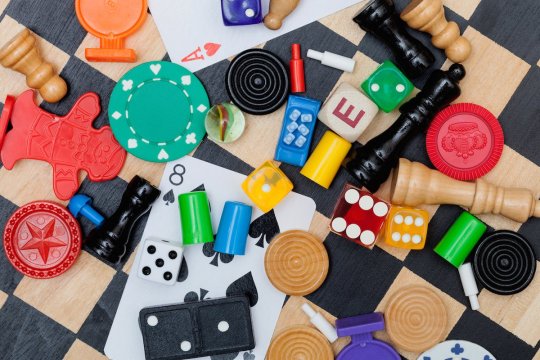#like one of the perks of this site IS you curate your own space!!! but i think a lot of people are forgetting that right now
Explore tagged Tumblr posts
Text
those "are you lgbtq+ polls" are so silly honestly because of course almost everyone is gonna vote yes.... that's the audience you've curated like and the chances of it "breaking containment" is unlikely even if you had all your followers reblog it because they probably also run in those same circles
#omg kiera no one cares#like i get why we're seeing so many and not just for fun#is because tumblr said only a quarter of its userbase is lgbtq and people think that's untrue#but you 100% do make your own circle and see no other outside that unless u choose too#like i saw someone say on that official tumblr post I've NEVER seen a cishet on tumblr#like buddy i know several cishet people on tumblr you just don't see them because that's the circle you run in#which is great that's how i like it !!!#i don't like how on twitter i can see anyones fucking ideas and opinions on things while here i have definitely curated my own space#that i feel safe and nice in minus a few times when people are weird#like i dunno i think it's just a bit silly and it's okay to do those polls for like fun but you're not gonna get any REAL proof I'm sorry#amyway i voted no on a recent one i saw even tho that is NOT TRUE because i needed to add realism#like one of the perks of this site IS you curate your own space!!! but i think a lot of people are forgetting that right now#for some reason
6 notes
·
View notes
Text
Bucky Barnes and the Summer Soldier- One

Pairing: Bucky Barnes x Enhanced! Reader
Summary: Bucky has been looking for you for a while. Is he going to destroy you before you complete your mission?
Word Count 2.2K
Warnings: 18+ Only, Minors DNI. S MUT! Read at your own risk. Curate your own experience. Reader is confined in a mental health faculty, suppressed memories, Pursuit, implied former combat, kidnapping, coercion, mind control, dub con. Raw s ex, hair pulling, rough s ex, cream pie, c um play/oral (m receiving), a ssault. Google translate Hausa and Russian. Not Beta’d. All errors my own.
A/N: This is a result of this ask from @flordeamatista. I have taken great liberties with the MCU cannon and timeline. This is fiction! As always, reblog if you like it!
I don’t have a taglist. Please follow @rampitupandread and turn on notifications to learn when I post!
I Do NOT Consent to my work being reposted, translated or presented on any other blog or site other than by myself.

You ran for your life, lungs burning, feet flying.
You looked behind you to see that the one pursuing you was not far off. You ducked down a hallway and into an open door.
Your chest heaved as you leaned against the wall and looked around for a hiding space.
Fragmented memories were coming back to you during this pursuit, and at this moment, the sense of running barefoot through tall reeds on the banks of a river overwhelmed you.
You shook it off, although you couldn’t help yourself from looking to the air for your favorite brightly colored water fowl. Your heart dropped when you looked around to register an empty room with a solitary gurney. The fact that you were trapped in a mental hospital and not outside it sucked the air out of you.
And then you heard his footsteps.
Bucky slowed his pace as his ears perked up, and he opened the same door you did moments before. He’d come for you an hour ago and you’d managed to evade him ever since. Typical for one who’d taken the serum. You were a hard target to acquire, but he was determined.
He scanned the empty room, checking for trap doors or hidden panels. He walked over to the windows, which were sealed shut. He looked down on the courtyard that patients weren’t allowed to use and shook his head, then, he made his way out of the door again.
You waited three minutes after you heard his footsteps retreating before you moved the ceiling tile and dropped down from where you’d been hiding.
For some reason, the man you were hiding from you terrified you. Ever since you saw his face weeks ago when you fought him on a mission, you’d been plagued with strange memories. Which made your Master have to reset you again and again. You resented that.
Despite the fact that you felt impelled destroy him, you did not want to face the dark-haired man in black with the piercing blue eyes again. You may not know your own name, but you knew that man had some mysterious power over you. Even more so than the Power Broker.
Just as you reached for the doorknob, the door jerked open, the man in black returning your stare with a rueful grin. You’d been too lost in your own thoughts to be fully aware of his presence.
“Daga karshe na sameki masoyiyata.”
Your ears perked up at the language that the man spoke. You understood it, although you’d spoken French for as long as you could remember, which wasn’t long. Maybe this horrible institution wasn’t your home.
“Why did you call me that?”
Your eyes widened when English came out of your mouth. It seemed a natural response to this man. You were very confused, more than you normally were, which was always.
The man was inching closer to you now.
“Because that is who you are, Soyayya ta.”
“No! That’s not true!”
You hurled yourself at the man, climbing up his body and winding up with your legs around his neck. You squeezed, hoping to choke him out while he grinned up at you.
“Yes it is.”
His voice was weak, as if he was gasping for breath. For an unknown reason, you let up on his windpipe.
Suddenly, you were sat on the gurney, your right leg in his left hand. You could not get out of his grip and you two stared at each while he held your legs apart. When he licked his lips was when you kicked him in the sternum. Clearly, he was surprised at the force, which caused him to double over, but he quickly recovered and caught you before you moved two feet, grabbing your bicep and bringing your arm behind your back, placing you none too gently against the wall.
You grunted as you felt all of him, including his manhood, pressed hard and insistent upon your back.
Was he going to violate you?
Did you want him to?
Yet another language flowed out of his mouth, which was close to the shell of your ear. You suppressed a shiver as you heard his velvet voice.
“Sygrayem v nashu malen'kuyu igru, kukolka?”
He snaked his left arm around your neck and pressed you back further into him as his gloved hand turned your face to his. He leaned around, as if he was going to kiss you, and opened his mouth. His breath fanned your face as he bared his teeth and bit the pointer finger of the black leather glove he was wearing. He used his mouth to tear the glove off to reveal a black and golden hand. You were mesmerized by it until it was quickly clamped over your mouth.
The sensation was familiar and when you tasted the metal; it was nearly orgasmic. Your eyes rolled baack into your head and you all but ignored the man’s other hand roaming your body.
“I’m just checking you to see if you’re okay, Doll.”
The hand tasted like home, like warm air and smells of your favorite foods. It tasted like beautiful people and excellence and safety and…Wakanda. Your eyes flew open when you realized.
Vibranium.
You sobbed as memories came flooding to your mind. The pathetic sounds were muffled by the vibranium hand.
Your mother. Your father. The river that was your home. Your weapons. Your money. The vow you took when you became a Dora Milaje and Shuri’s personal guard. The same vow that you broke when you fell in love with Bucky Barnes, the Winter Soldier…
“Farar kerkecina.…James…”
“Shhhh Doll. I’m here now.”
Bucky pulled you into his arms from behind, and you held on to the limbs that were wrapped around you as you cried, one human and one created by the Princess, Shuri.
Finally, you turned around and looked up at the love of your life. He peered back at you, eyes full of concern, but also a mixture of relief, love, and yes, need.
“Are you okay?”
You didn’t answer him, instead, you asked your own question.
“How long, James? How long have we been apart?”
Bucky brought his hand up to your face, thumb tracing your chin and fingers in your dense curls.
“A little over two years.”
You gasped and tears fell again fresh and new.
“I searched for you every day. I promise, Doll. And you’ve been right under my nose…”
Your heart melted.
“I know you did. The Power Broker is devious. She did horrible things. Made me do…”
And then he kissed you. His lips were the softest and strongest you’d ever tasted. You licked into his mouth and fisted his t shirt between you.
“You don’t have to tell me. I know. And I’m going to find her and bring her to justice.”
Bucky was panting as your hand strayed to touch the bare skin and the metal under his shirt. He smirked when you pinched his nipple.
“She is mine to destroy.”
Bucky’s smirk turned into a full fledged grin when you glared up at him and opened his pants. He shivered when you fisted him.
“There’s my girl.”
You separated from him as you pulled your shirt over your head. Next went your pants and underwear as Bucky’s eyes roamed your body. He licked his chops, just as the White Wolf would.
“You sure you don’t wanna leave, Doll? Need to check you out. Need to get you an examination… get you safe…”
You backed away from him toward the gurney.
“I need to have you James. Please. I remember. It’s been so long. I need some control back. Please.”
Bucky couldn’t stop himself from moving toward your upturned ass as you bent over the gurney and looked over your shoulder at him.
“You told me the serum heightened everything. But I didn’t understand before. I need you now, James.”
Bucky was drawn to you as if on a string.
“I get it, Doll. Everything is so much. You sure you alright, Doll?”
You hadn’t said that you were before, but you avoided the topic again.
“See for yourself, farar kerkecina.”
Bucky rubbed your ass, eyes glazed over, lust flowing through his veins. It had been a long 26 months and visions of you clouded not only his dreams, but every spare waking moment. He couldn’t help it.
His metal hand quickly undid his belt and pants while his right, his flesh, dipped into you, feeling the wetness between your legs. You reached back to the arm that shined, incrementally trying to bring him into you. He held you off, but he did slowly start to swipe his cockhead through your neglected folds.
“Oh…”
Bucky watched and drooled as he took in the vision of your mouth and that wide open, perfect O of those perfect lips.
“So gorgeous… Soyayya ta..”
He slowly breached your tight hole, and your mouth widened impossibly even more as the stretch almost took you out. It hurt, but it hurt so good, the only positive sensation you’d had in over two years.
This time, Bucky let you reach back to grasp the base of him, slowing down as he saw the difficulty with which you were having taking him. You adjusted his aim, and he paused, hand on your hip as you spread your cheeks so that he could get inside you. Your eyes met in surprised sensation as he was finally able to slide all the way home.
“Feel so damn good, White Wolf!”
You started moving faster on his cock as his hands slid up your wiast to your tits, squeezing, groping, making up for lost time.
He was stroking a slow, steady, deep pace, as his metal fingers made their way into your open mouth, pressing down your throat as your tongue swirled around your native metal.
“So goood….”
You were gagging around his fingers, partly because of his actions, and partly because he felt so good inside you. You reached back and grabbed his shirt, pulling on it as you took his thick cock inside you, looking back at him stretching your tiny hole with awe. You looked into each other’s eyes as you felt him swelling impossibly.
“Love your bald head, but I like this hair, Doll. I can do this…”
And Bucky grabbed your curls, pulling on your roots deliciously and stretching your neck so that he could engage you in a filthy kiss while he drove into you. You separated, gasping for breath.
“Bast! James, is your cock made of vibranium too?”
He laughed at the old joke, which made the rounds of the Dora until you found out the truth.
“You make me feel like it is, soyayya ta.”
Bucky let you go so that you could hold on to the gurney and fuck yourself on his cock.
He grabbed your breasts again and the look of surprised lust came was mirrored on both of your faces as you felt yourself squeezing him with your impending orgasm.
“C’mon, Soyayya ta. Give it to me.”
“James, oh James. Oh….!”
“Good god!”
You bent fully over the gurney when you came, and Bucky had a clear view of your beautiful cream on his cock. That’s when he started pounding you out properly, using you to reach his end. Your senses were so alive that you felt each stream and splash of his cum inside you, and it caused your sensitive cunt to shudder. You lay there under him as he collapsed on top of you, relishing the feel of him.
“Fuck, fuck, fuck…”
Bucky kissed your shoulder and down your back as he looked around for something to clean up with. You looked back at him, and stood up, Bucky’s spend leaking down your legs.
“Let me.”
You gave him that look as you bent over, taking his still semi-hard cock in your hand. You stared at him straight on as you took him in your mouth and cleaned him off.
“That mouth, those eyes… you’re killing me here…”
You smiled around his girth and then opened your mouth to let him see the effects of your handiwork.
“On my life, Doll. I will never get enough of you.”
He pulled you up to standing and leaned down to give you a filthy kiss.
“So glad to have you back in my arms.”
Bucky turned around and leaned on the gurney as he held you. You leaned into him, tears pricking your eyes as you felt the same emotions, but knowing what you had to do.
“I love you, farar kerkecina…”
You gave him a tender kiss on the lips before you delivered a blow to his vagus nerve. Bucky went out immediately, and you gently laid him on the gurney before you got dressed again.
“I have to finish this with the Power Broker, and I know you will try to stop me.”
You tucked the underwear that you’d cleaned up with into his jeans pocket, trading them for the keys to this asylum.
“We will be together soon, my love.”
You gave him a kiss on his perfect lips before you quickly made your out of the hospital, on your way to kill Sharon Carter for making you the Summer Soldier and taking the child from your belly.

Daga karshe na sameki masoyiyata (Hausa)– "I finally found you my love"
Soyayya ta (Hausa)— My Love
Sygrayem v nashu malen'kuyu igru, kukolka? (Russian)-- "Shall we play our little game, Doll?"
Farar kerkecina (Hausa).… "My white wolf"
#ask dj#sebastian stan#bucky barnes imagine#bucky barnes#bucky barnes x black female reader#bucky barnes x reader smut#bucky barnes x black!reader#winter soldier smut#winter soldier x reader#winter soldier x dora milaje reader#bucky barnes x dora milaje reader#bucky barnes x enhanced reader#falcon and the winter soldier#captain america and the winter soldier#bucky barnes smut#sharon carter#power broker
324 notes
·
View notes
Text
Top 10 Benefits of Living in Fully Furnished Lofts
Moving into a new apartment can be an exciting experience, but it can also come with its fair share of stress—especially when it comes to furnishing the space. Fully furnished loft apartments in Memphis TN are a game-changer, offering convenience, style, and significant savings for renters seeking a hassle-free lifestyle. Whether you’re a busy professional, a student, or someone relocating to a new city, here are the top 10 benefits of living in a fully furnished loft:
1. Immediate Move-In Readiness
One of the biggest perks of renting a fully furnished loft is that it’s ready for you to move in right away. There’s no need to spend time shopping for furniture or waiting for deliveries—simply bring your personal belongings, and you’re set.
2. Cost Savings on Furniture
Furnishing an apartment from scratch can be costly. With a fully furnished loft, you can save thousands of dollars on essentials like sofas, beds, dining tables, and appliances. These savings can be allocated toward other priorities, such as travel, hobbies, or investing in your future.
3. Stylish and Modern Interiors
Fully furnished lofts often come with professionally curated interiors that blend style and functionality. Expect sleek furniture, modern appliances, and thoughtful décor that elevates your living space. At The Urban Loft Co., our furnished lofts are designed with a contemporary aesthetic to suit modern urban lifestyles.
4. Simplified Relocation Process
For those relocating to a new city, a fully furnished loft offers a seamless transition. Without the need to transport bulky furniture, you can move quickly and with minimal effort. This is especially appealing to students, temporary workers, and digital nomads who move frequently.
5. Reduced Stress and Decision Fatigue
Choosing furniture and décor can be overwhelming, particularly if you’re not experienced in interior design. Fully furnished lofts eliminate decision fatigue by providing a cohesive, well-thought-out living environment, so you can focus on enjoying your new home.
6. Flexible Lease Options
Many fully furnished apartments, including those offered by The Urban Loft Co., come with flexible leasing terms. This flexibility is ideal for those who need short-term accommodations or aren’t ready to commit to a long-term lease.
7. Built-In Essentials and Amenities
In addition to furniture, fully furnished lofts often include essential appliances and amenities like:
High-speed internet
Smart TVs
Washer and dryer units
Kitchen appliances (microwave, refrigerator, dishwasher, etc.)
Having these essentials built-in saves you from the extra expense and effort of purchasing or installing them.
8. Ideal for Temporary Stays
Whether you’re in town for a work assignment, an extended vacation, or a temporary life change, fully furnished lofts provide a comfortable home without the long-term commitment of buying furniture.
9. Minimal Maintenance Hassle
Furnished apartments are typically designed for easy maintenance. Durable furniture, efficient layouts, and included services like on-site maintenance make life easier for busy tenants who don’t want to spend hours on upkeep.
10. Better Resale Value for Your Own Furniture
If you already own furniture but plan to move frequently, renting a fully furnished loft allows you to keep your existing furniture in storage or sell it at a good price. You avoid the wear and tear that comes with constant moving, preserving its resale value.
Conclusion
Living in a fully furnished loft provides unparalleled convenience, cost savings, and flexibility. It’s an ideal option for anyone seeking a stylish, ready-to-live-in space without the burden of furnishing an apartment from scratch. Whether you’re relocating for work or simply want to experience hassle-free urban living, The Urban Loft Co. offers thoughtfully designed furnished lofts that cater to your lifestyle needs.
Ready to find your next home? Explore our fully furnished loft options at The Urban Loft Co. and enjoy the benefits of modern, stress-free living today!
#Apartments Memphis TN#Memphis TN Apartments#Apartments for rent Memphis TN#New apartments Memphis TN#apartments near UTHSC memphis
0 notes
Text
Squarespace Vs. Wix
New Post has been published on https://walrusvideo.com/squarespace-vs-wix/
Squarespace Vs. Wix
Disclosure: This content is reader-supported, which means if you click on some of our links that we may earn a commission.
Wix
takes the prize for simplifying the process of making a website. Its drag-and-drop interface, hundreds of apps, and wider pricing options mean anybody can whip up a website without breaking a sweat.
Squarespace
has a better selection of design templates but its customization options require more technical confidence. Squarespace also outperforms Wix’s blogging and ecommerce tools by a very small margin, but the more flexible Wix has something for everyone.
Squarespace or Wix: Which is Better?
Squarespace’s sleeker, more professional-looking template designs are best for creatives who place a high value on aesthetics. Its grid-style editor requires a little bit of time to get to grips with, making it better for those with technical experience.
Turn your ideas into a visually-appealing Squarespace website for free.
Wix is best for beginners who want an easy way to create a website pronto . It has a drag-and-drop interface so building a website is as straightforward as solving a kiddie puzzle. It also comes with hundreds of templates and features to give users creative freedom regardless of their skill level.
Start your own free and stunning Wix website today
.
A Review of The Best Website Builders.
A good website builder spells the difference between an idea that grows into something big and one that fizzles out. To give you a head start, I’ve mustered up my experiences with building websites and reviewed
the top website builders
that may fit your needs.
Wix has proven once again why it’s considered a major player in the industry. Squarespace, though not included in the list, has its own perks that appeal to those with a specific set of criteria.
Squarespace Wins
Unlimited storage space: All of Squarespace premium plans come with unlimited bandwidth and storage so you can host unlimited files while ensuring media files will download smoothly. While the majority of Wix plans do offer unlimited bandwidth, none of them provide unlimited storage so you can’t just upload any files to your heart’s content.
Structured page editor : Squarespace doesn’t have the exact drag-and-drop functionality Wix is famous for. Its page elements are packed inside content blocks which you can move around and snap into rows and columns. Restrictive as it may appear, though, this feature helps you create your page within a more controlled environment, which can help prevent inadvertently sloppy designs.
High-quality, professional-grade template designs : Wix may offer more template choices but Squarespace trumps its competitor in terms of quality. It has over 60 template designs that are not only aesthetically superior but also easier to navigate both for the builder and viewer. Regardless of what template you choose initially, you can customize or replace it with another one anytime.
One-click color palette customization : Squarespace takes the guesswork out of choosing the right color theme that matches your brand. All you have to do is select a palette and Squarespace will apply it throughout your website.
Like Wix, Squarespace also offers the freedom to pick specific colors for individual elements. But since most users don’t have a design sense, Squarespace’s preselected color schemes take the headache and guesswork out of your site’s aesthetics.
Well-thought-out in-house features : Squarespace may have fewer features than Wix but what it lacks in numbers it makes up for in execution. Its in-house features are meticulously designed and built into its editor so you can manage your website even without installing third-party extensions.
Its restaurant menu editor, for example, uses a markup language so adding items is like filling out a simple form. In contrast, Wix accomplishes the same task through a relatively more tedious process that requires several clicks.
Squarespace’s donation system is likewise superior to Wix’s because it goes beyond providing a donation button by offering donor-specific checkout, donor email receipts, and suggested amounts.
Seamless podcast syndication : Starting a podcast? Squarespace also beats Wix’s basic podcast player by being the only one in the industry to offer syndication. With this feature, you can submit your podcast to Spotify or Apple Podcasts where a legion of potential fans can discover you.
Curated third-party apps : Whatever Squarespace lacks in-house, it offers as a third-party extension. Even Wix’s in-house features that Squarespace doesn’t have can be matched by a third-party counterpart so you won’t miss out on anything.
For example, the Wix Events app enables visitors to book tickets online whereas Squarespace can be integrated with Eventbrite to do the same thing. Similarly, integrating Memberstack with Squarespace accomplishes the same thing as the Wix Members app.
Ready-to-use blogging tools : With Squarespace, you can start blogging and showcase your best content to the world right off the bat. Unlike Wix that requires you to install a separate blog app, Squarespace has built-in blogging tools.
Basic features like post tagging, categories, comment moderation, and drafts will help you create professional-looking blogs regardless of your industry. Working with multiple authors is also a breeze as Squarespace allows you to collaborate with them on a single post or assign them different roles.
Sophisticated ecommerce functionality : When it comes to building your online store, Squarespace gives Wix a run for its money. It offers the same basic features you’ll find in Wix like custom email receipts, point of sale system, and automated cart recovery.
To maximize your profits, however, Squarespace steps up its game by offering features that Wix doesn’t. These include gift cards to help with your brand promotion. You can also use “back in stock” and “low stock” notifications to create a sense of urgency without being too pushy.
24/7 online support : Should you encounter technical issues with your Squarespace website, you can reach out to their customer support team via email, Twitter, or live chat. These online channels allow their team to get to the bottom of your issue faster.
Squarespace has excluded phone support because their existing support channels allow them to troubleshoot your issues comprehensively without the need to put you on hold.
Squarespace Losses
Lacks intuitive drag-and-drop interface . Squarespace’s page editor works like a minimalist grid system so you can’t drag and drop elements as freely as you can. Less freedom means less opportunity to play around with the design. It also takes a longer time to get used to so Squarespace is not as beginner-friendly as Wix.
Limited creative control : Squarespace’s biggest advantage is also its disadvantage. The “structured” editor may enable you to customize a website design within the realm of what’s acceptable but it also means you have less creative control.
The templates are on par with professional designs but you can’t edit, move, resize, or re-color the page elements as easily as you can with Wix. You also can’t display both the site title and logo at the same time.
Limited template designs . Fewer design choices also make it more difficult to stand out. Most photographers, for instance, trust Squarespace to host their portfolio sites.
With limited templates to choose from, they’re more likely to pick the same template. As a result, they may end up with portfolio websites that have the same look and feel as other sites in their industry.
Less generous ecommerce plans : Squarespace outnumbers Wix’s ecommerce features but you won’t benefit as much if you’re only subscribed to its basic plan.
Squarespace’s basic ecommerce features cost $18 per month (Business plan) while its Wix counterpart is a tad higher at $23 per month (Basic Business plan). However, you won’t save as much with a basic plan as Squarespace charges a 3% transaction fee unless you upgrade.
You also won’t have access to some crucial features like abandoned cart recovery if you’re not under the Advanced Commerce Plan that costs $40 per month.
By contrast, Wix charges no transaction fee on any of its ecommerce plans and offers abandoned cart recovery even to those in the basic plan.
Wix Wins
Scalable pricing : Wix has a wider range of pricing options so you can start your website anytime and easily scale as it grows. The free plan is available for beginners who are still learning the ropes and are not bothered by Wix-sponsored ads and subdomains.
If you want a custom domain, you can switch to the most basic plan for only $4.50 a month. From here, you can upgrade to any of the three higher website plans or start an online store for as low as $17 per month for the Business Basic Plan. Squarespace, on the other hand, only offers four pricing tiers starting with the Personal plan at $12 per month. It doesn’t come with a free plan and most of the important features are only available in higher plans.
Beginner-friendly interface : Wix’s drag-and-drop editor remains its top selling point. It gives you a template to create a simple website in minutes without learning how to code. Squarespace is also a “no-coding” website builder, but its grid-style editor makes it cumbersome for some beginners. With Wix, you can have full control of the layout and even add functionality by dragging and dropping widgets on your page.
More in-house apps: Name any feature you want your website to have and Wix has an app for it. Do you want to create a forum? Look for Wix Forum in the App Market and install it for free. Planning to add a live chat to connect with your visitors in real-time? Try Wix Chat, another in-house app you can add for free. If none of the built-in Wix apps is what you’re looking for, don’t worry as there are still over 200 free and premium third-party extensions to choose from.
Free email marketing tools : With this built-in feature, you can send email campaigns to your contact list and even create workflows to manage your own sales funnel. Measure how well each of your campaigns is doing through the stats tracker that lets you see how many people open and engage with your emails.
Wix’s email marketing tools are part of the Ascend all-in-one business solution that gives you access to other marketing tools like live chat, social media integration, and SEO tools. The best part is you can have access to a limited number of features for free or upgrade to one of the three paid plans to enjoy the full benefit.
Robust SEO features : Wix has its own game plan to help your content rank high on Google. What’s great is Wix puts all its strategies in one place so users can learn SEO themselves and improve their online presence. The SEO Wiz contains step-by-step tutorials, achievement updates, and tons of other learning materials so you can start improving your site’s visibility even if you never heard about SEO before.
Multiple customer support channels : Unlike Squarespace, Wix offers phone support so you can rest assured that humans and not bots are handling your concern. Wix also provides support through forums, social media, and email but not through live chat. In case you get stuck or confused while working on the page editor, there are small question marks on the screen that you can also click to get quick solutions without leaving the page.
Automatic backup-and-restore feature : Wix is a proactive website builder that anticipates unfortunate events and has developed a counteracting feature in case they happen.
Through Site History which you can find inside your site Settings, you can restore a previous version of your website. You can restore revised versions of your site regardless if it’s saved manually or automatically.
Best of all, the previously saved version of your site can be restored without affecting published blog posts and changes made in your email list.
Wix Losses
Underwhelming template designs : Wix focuses on quantity over quality when it comes to design. Its over 500 customizable templates easily beat Squarespace’s 70+ designs. But with more choices comes more time wasted picking and overanalyzing which one suits a website idea best.
A “quantity over quality” approach also leads to many Wix templates failing to make a great first impression. While there are hidden gems, it takes time to find them as they are outnumbered by generic templates, some of which are downright cheesy.
Unstructured page editor : Wix’s drag-and-drop interface has its own flaws. While it helps even non-pros create websites quickly, the changes you make in the desktop version may not necessarily sync to its mobile version. For instance, when you move an image from the top of the page to the bottom, the same change won’t reflect in the mobile version unless you make the same change twice. With Squarespace’s structured editor, movements are much more restricted but any change you make will reflect in both screens.
Complicated color changes : Wix lacks the preselected color palettes that Squarespace has, so changing text and background colors are not as straightforward. This is the downside of having more freedom to manipulate page elements. You may be free to choose the colors of individual page elements but if you don’t have a background in design, knowing which colors will work best without preset recommendations can be really tough.
Limited bandwidth and storage space : Wix doesn’t have the unlimited resources that Squarespace offers in all its plans. Therefore, the cheaper your Wix plan is, the more restrictions you’ll get on how many files you can store and how much traffic your website can get per day.
Wix’s cheapest plans, Connect Domain and Combo, only offer a bandwidth of 1 GB and 2 GB, respectively. This is enough if your website receives only a handful of visitors per month. However, once a website gets at least 1,000 visitors a day, it will require about 8.5 GB of bandwidth monthly, something that Wix only provides starting with its Unlimited plan that costs $12.50 per month (billed annually).
Mediocre blogging tools : You can create a decent blog with Wix but if you’re looking for more features, you’ll get it from Squarespace. Wix is capable of scheduling posts, adding tags or categories, and saving drafts. However, it doesn’t allow comment moderation so you can’t filter comments and publish only those you approve of. On top of that, Wix doesn’t have a built-in blogging feature. You have to add the free Wix Blog app yourself before you can start creating content.
Limited flexibility for free plans : When you start a free website with Wix, you won’t pay for anything but it comes at the cost of flexibility. The Wix subdomain, ads, and the look of a free site tend to come off a lot less professional. If you want to experiment with a free site, that’s fine, but you’ll have to upgrade to premium Wix plans to really establish your own brand.
Comparing The Top Website Builders.
Do you want to build a website from scratch without touching any codes? With a website builder, you can do that and more. If you want to get started,
here are the best website builders I recommend
:
Wix
— Best for general use
Weebly
— Best for beginners
Shopify
— Best for ecommerce
WordPress
— Best for content management
Wix is the undisputed website builder of choice
if you want to quickly launch a website even without the technical know-how. Its drag-and-drop interface requires a short learning curve while its hundreds of templates and features allow you to elevate your website any way you want.
But for a more professional site with a stronger design aesthetic and more customization options, especially one you’re willing to take some time to build,
Squarespace will be the better choice
.
See How My Agency Can Drive Massive Amounts of Traffic to Your Website
SEO – unlock massive amounts of SEO traffic. See real results.
Content Marketing – our team creates epic content that will get shared, get links, and attract traffic.
Paid Media – effective paid strategies with clear ROI.
Book a Call
#gallery-7 margin: auto; #gallery-7 .gallery-item float: left; margin-top: 10px; text-align: center; width: 33%; #gallery-7 img border: 2px solid #cfcfcf; #gallery-7 .gallery-caption margin-left: 0; /* see gallery_shortcode() in wp-includes/media.php */
Go to Source Author: Neil Patel
0 notes
Photo

How to Boost Your Developer Career with a Personal Brand

Personal branding is one the most (in)famous trends of the last decade.
In this article, I’ll talk about what a personal brand is and how building one can help boost your career. I’ll show you how to stake your claim in the online space as well as three paths you can follow to level up your brand. That’s plenty to talk about, so let’s get this started.
The argument for a personal brand as a developer
Our first stop is Wikipedia, where we can find the following definition:
Personal branding is the practice of marketing people and their careers as brands. It is an ongoing process of developing and maintaining a reputation and impression of an individual, group, or organization.
That’s the part most of people have in mind when they think about personal branding. They think about the current diva of the day. About famous media celebrities. About publicity stunts that are meant to push you into the limelight. About presenting a fake facade in order to obtain undeserved rewards. And many other less-than-pleasant examples.
However, there’s another aspect to personal branding — the other side of the coin, so to speak. Right after the definition above, the Wikipedia article has the following phrase:
In Be Your Own Brand, first published in 1999, marketers David McNally and Karl Speak wrote: “Your brand is a perception or emotion, maintained by somebody other than you, that describes the total experience of having a relationship with you.”
In other words, your personal brand includes what other people say about you when you’re not there. It includes your reputation, your body of work, the testimonials other people give about you. Nowadays it includes your tweets and your posts on Facebook. To many people, your pictures on Instagram matter just as much (if not more) as your contributions to open-source software. Want to travel in the USA? Be prepared to let them know all your social media accounts for the last five years. (Sources: Sophos and BBC). And the examples can continue.
Everything you say and do affects your public image and your reputation. And that can have devastating impact on your career. Remember the Aria Richards case back in 2013? She was a developer taking part in a conference where she published a tweet about some male developers making sexual jokes behind her, including their picture. In the fallout, one of the guys was fired, but Aria lost her job as well, because her action was deemed to be damaging to the reputation of the company employing her. (Sources: ArsTechnica and CBSNews).
Fortunately, it’s not just about mitigating possible damage. A great personal brand can increase your leverage at a level you wouldn’t dream about it. It can put you in a better light when applying to a new job, and you’ll have better negotiating power when discussing the salary and the perks of the position. If you have your own business, it can bring you more and better clients and projects. What’s not to like about it?
But there’s one caveat in all this: be authentic. Don’t do it to project something you aren’t, or as a money-grabbing move or, worse, to cover negative aspects. That’s the main reason people react badly when hearing about personal branding.
This subject alone (the pros and cons of personal branding) can fill a whole book and goes beyond the scope of this article. So, stop letting others write your story and take control of your narrative. All this being said, let’s push forward.
Stake your claim and establish your presence
The first phase in building your personal brand is staking your claim in the online space and laying down the foundations for further expansion. It is, in my opinion, the most important part of the process. If you do nothing else from the other things we’ll talk about later, but you work on this part, I’m confident you’ll get a lot further than many other people.
We’re currently living in the age of social media, so you might be surprised to hear that this foundation is actually your own website. Yes, a website. The old-fashioned kind, where you buy a domain name, arrange hosting and upload the files on the server for everyone else on the Internet to find.
“That’s the dumbest idea I’ve heard,” you might say. “I don’t need a website. I have my CV on LinkedIn, my pictures on Facebook and Instagram, my articles on Medium, my code on GitHub and I keep in touch with everyone on Twitter. Why would I waste time and effort with a website that I have to promote as well?”
From a certain point of view, all that sounds quite reasonable. But all those options have one thing in common: they’re all third-party platforms, and you’re actually renting the right to use them. You might not pay with money, but they are gathering data about you and your habits that’s either used to target ads your way or it’s passed to third parties for the same reasons. Remember, if you’re not paying for something, then you are the product being sold.
It all comes down to a simple truth: you can’t build your home on rented land. You can lose access to social media at any moment. All these platforms have somewhere in their terms and conditions a clause that allows them to terminate their service to you at any time without having to provide an explanation. Or your account could get hacked or deleted. Your tens or hundreds of thousands of followers? All gone in a blink of an eye if you lose access to the platform.
That’s why you need something you own completely — a place to present yourself without being beholden to a platform that only cares about their own interests. You need a way to gather contacts, followers, connections and clients and be able to keep them. Yes, websites and servers do get hacked. But in that case, all you need to do is install the latest backup and you’re up and running again.
Let’s get down to the trinity of items needed to establish your online presence:
A domain name
You need your own custom domain name for multiple reasons. It gives you more legitimacy and it opens the gates for further options down the road. www.johnnydev.com is a lot better than johnnydev2335.github.io, don’t you think? We can have a very long discussion over whether it’s better to choose a “brand name” or your own given name for the domain. However, that’s a conversation for another time and place.
Hosting
There are plenty options of free hosting for developers: GitHub Pages, Netlify and many more. In many cases, that’s all you need to have a website up and running. For some of the more advanced options, though, it’s better to get some classic dedicated hosting.
Custom email address
This is the same story as with the domain name above. I think we can agree that [email protected] is more professional than [email protected] or some other email address you created when you were 16 years old.
Now all you have to do is upload your site and let everyone know about it. You can go from something as simple as a single static page to something complex like a WordPress blog or a static site generator like Gatsby or Hugo. Don’t despair if design isn’t your strong point. There are plenty of free themes and templates available.
Remember, you don’t have to code the website yourself. You get extra brownie points and bragging rights for writing as much code as possible yourself, but that’s not a requirement. If time’s at a premium for you, just grab a free template or theme and get started. Be sure to check the code for any hidden, unpleasant surprises, though, or use trusted sources, like curated collections and communities. All major players, like WordPress, Gatsby or Hugo, come with curated themes that you can choose from.
Once you have a website
Congratulations! You just became the proud owner of your own piece of online real estate. You how have a place where you can link all your social media profiles, upload your CV, write some blog posts or even articles. If you want to take it even further and remove further your dependency on other platforms, you can start your own email list. But that’s a topic for another time. For now, we’ll focus on three paths you can take to further increase your influence, your reputation and, ultimately, your personal brand. These are paths that other developers have taken before, and they got a lot of benefits out of that choice. They’re also not mutually exclusive. You can mix and match until you get the combination that works best for you.
Continue reading How to Boost Your Developer Career with a Personal Brand on SitePoint.
by Adrian Sandu via SitePoint https://ift.tt/2RY9gXb
0 notes
Text
5 New Standout Hotels in London
Well established as a design capital — the famed Victoria and Albert Museum was founded in the 19th century as a design museum — London has become the world’s best hotel city.
There are the pillars of timeless elegance, like Claridge’s and The Connaught, which set the hospitality bar quite high while injecting glamour into the hotel cocktail bar and restaurant.
England’s capital also hosts upstarts like The Hoxton, which opened its first hotel in 2006 in Shoreditch, an East End neighborhood, helping to transform the district and redefine the hotel lobby as a creative hangout, aglow with laptops.
Game-changers like Chiltern Firehouse — opened in 2013, still white hot, and not just because it’s got a secret smoking room — and The Ned, the 252-room hotel and members club opened in 2017 by the founder of Soho House, continue to rewrite the rules of what hotels can be: a place to rest your head, of course, but cultural touchstones, too. That’s why The Standard chose London for its first address outside the United States — on Euston Road in a striking 1974 Brutalist building, opening officially in the fall.
In the city’s current hotel-opening boom times (the Great Scotland Yard Hotel is due late 2019), here are five standouts.
Vintry & Mercer
Named for the 14th-century merchants and traders who established this district in the City of London, this 92-room hotel is 100 percent powered by renewable energy and has a rooftop terrace, where lunch comes with views of St. Paul’s and the Shard.
Velvet headboards, leather door handles and vintage-map wallpaper give the individually designed rooms lush character; lots of plants in the public spaces create a business traveler’s bolt-hole; and Do Not Disturb, an underground speakeasy with leather banquettes and images of Zeigfield Follies girls on the walls, has its own sultry entrance set back on Garlick Hill.
Vintry & Mercer; from about $225; 19-20 Garlick Hill, City of London.
Mandarin Oriental Hyde Park
Just before a major renovation was to be unveiled last year, a fire ripped through this property, so the old-world behemoth had to be renovated again — for a total cost of $192 million. The results are shockingly luxurious and certainly not for the faint of wallet (nor for anyone with a shopping, er, problem, given the proximity to the fashion temples of Knightsbridge), but well suited to one of the few hotels on Hyde Park.
You can set your Rolex by the Royal Horse Guards riding by every morning at 10:30 on the way to the Changing of the Guard at Buckingham Palace.
Very near Tower Bridge and the Tate Modern, this 193-room hotel is a refurbished 1905 magistrate’s court. While there’s a whiff of businessman’s hotel design in the rooms (it’s part of Marriott’s Autograph Collection), some details from the architect John Dixon Butler’s Edwardian original are intact — such as the Y-shaped central staircase.
There are cheeky allusions to the building’s history, too: a coffee table in the Orwell Suite was made from benches etched by former prisoners, a glass chandelier in the lobby is made up of tiny handcuffs, mug shots decorate the Courtroom bar and the coffee roasted on site is called — wait for it — Shakedown.
The Dixon; from about $320; 211 Tooley Street, Southwark.
Belmond Cadogan Hotel
The original Cadogan Hotel, where Oscar Wilde was arrested in 1895, was built in 1887. After a four-year, $48 million restoration, it’s now a 54-room (and suite) boutique hotel in central London with lots of exclusivity, including access to the mulberry trees and tennis courts of the private Cadogan Place Gardens.
Original design details — working fireplaces, mosaic floors, wood paneling — have been preserved, and rooms have a plush residential vibe with little sofas, intricate molding and eclectic art under recessed lighting. The hotel also landed a couple of key collaborations: with an independent bookshop, John Sandoe Books, for a small library of British literature; and with the chef Adam Handling, a 30-year-old Scottish darling of the London food scene, for its restaurant and all of its food and beverage.
Belmond Cadogan Hotel; from about $600; 75 Sloane Street, Chelsea.
The Hoxton, Southwark
A new 14-story building among the converted factories on the south side of Blackfriars Bridge, London’s third Hoxton hotel is due to open in September. The 192 rooms — designed by Ennismore Design Studio — come in five categories: Shoebox, Snug, Cosy, Roomy and Biggy, all fitted with British-made new and antique furniture.
The rooftop restaurant overlooks the Thames. Perks standard to the brand include a minibar that guests can stock with local products from the hotel’s shop (at supermarket prices) and a free breakfast bag delivered daily to the room.
A new twist: the inclusion of Working From_, a six-floor shared work space within the hotel, with 744 desks, five meeting rooms, its own entrance, a winter garden and a wellness studio with class programming curated by the every-body fitness company Refinery E9.
The Hoxton, Southwark; from about $265; 40 Blackfriars Road, South Bank.
52 PLACES AND MUCH, MUCH MORE Follow our 52 Places traveler, Sebastian Modak, on Instagram as he travels the world, and discover more Travel coverage by following us on Twitter and Facebook. And sign up for our Travel Dispatch newsletter: Each week you’ll receive tips on traveling smarter, stories on hot destinations and access to photos from all over the world.
The post 5 New Standout Hotels in London appeared first on Tripstations.
from Tripstations https://ift.tt/2MMeHaU via IFTTT
0 notes
Text
5 New Standout Hotels in London
Well established as a design capital — the famed Victoria and Albert Museum was founded in the 19th century as a design museum — London has become the world’s best hotel city.
There are the pillars of timeless elegance, like Claridge’s and The Connaught, which set the hospitality bar quite high while injecting glamour into the hotel cocktail bar and restaurant.
England’s capital also hosts upstarts like The Hoxton, which opened its first hotel in 2006 in Shoreditch, an East End neighborhood, helping to transform the district and redefine the hotel lobby as a creative hangout, aglow with laptops.
Game-changers like Chiltern Firehouse — opened in 2013, still white hot, and not just because it’s got a secret smoking room — and The Ned, the 252-room hotel and members club opened in 2017 by the founder of Soho House, continue to rewrite the rules of what hotels can be: a place to rest your head, of course, but cultural touchstones, too. That’s why The Standard chose London for its first address outside the United States — on Euston Road in a striking 1974 Brutalist building, opening officially in the fall.
In the city’s current hotel-opening boom times (the Great Scotland Yard Hotel is due late 2019), here are five standouts.
Vintry & Mercer
Named for the 14th-century merchants and traders who established this district in the City of London, this 92-room hotel is 100 percent powered by renewable energy and has a rooftop terrace, where lunch comes with views of St. Paul’s and the Shard.
Velvet headboards, leather door handles and vintage-map wallpaper give the individually designed rooms lush character; lots of plants in the public spaces create a business traveler’s bolt-hole; and Do Not Disturb, an underground speakeasy with leather banquettes and images of Zeigfield Follies girls on the walls, has its own sultry entrance set back on Garlick Hill.
Vintry & Mercer; from about $225; 19-20 Garlick Hill, City of London.
Mandarin Oriental Hyde Park
Just before a major renovation was to be unveiled last year, a fire ripped through this property, so the old-world behemoth had to be renovated again — for a total cost of $192 million. The results are shockingly luxurious and certainly not for the faint of wallet (nor for anyone with a shopping, er, problem, given the proximity to the fashion temples of Knightsbridge), but well suited to one of the few hotels on Hyde Park.
You can set your Rolex by the Royal Horse Guards riding by every morning at 10:30 on the way to the Changing of the Guard at Buckingham Palace.
Very near Tower Bridge and the Tate Modern, this 193-room hotel is a refurbished 1905 magistrate’s court. While there’s a whiff of businessman’s hotel design in the rooms (it’s part of Marriott’s Autograph Collection), some details from the architect John Dixon Butler’s Edwardian original are intact — such as the Y-shaped central staircase.
There are cheeky allusions to the building’s history, too: a coffee table in the Orwell Suite was made from benches etched by former prisoners, a glass chandelier in the lobby is made up of tiny handcuffs, mug shots decorate the Courtroom bar and the coffee roasted on site is called — wait for it — Shakedown.
The Dixon; from about $320; 211 Tooley Street, Southwark.
Belmond Cadogan Hotel
The original Cadogan Hotel, where Oscar Wilde was arrested in 1895, was built in 1887. After a four-year, $48 million restoration, it’s now a 54-room (and suite) boutique hotel in central London with lots of exclusivity, including access to the mulberry trees and tennis courts of the private Cadogan Place Gardens.
Original design details — working fireplaces, mosaic floors, wood paneling — have been preserved, and rooms have a plush residential vibe with little sofas, intricate molding and eclectic art under recessed lighting. The hotel also landed a couple of key collaborations: with an independent bookshop, John Sandoe Books, for a small library of British literature; and with the chef Adam Handling, a 30-year-old Scottish darling of the London food scene, for its restaurant and all of its food and beverage.
Belmond Cadogan Hotel; from about $600; 75 Sloane Street, Chelsea.
The Hoxton, Southwark
A new 14-story building among the converted factories on the south side of Blackfriars Bridge, London’s third Hoxton hotel is due to open in September. The 192 rooms — designed by Ennismore Design Studio — come in five categories: Shoebox, Snug, Cosy, Roomy and Biggy, all fitted with British-made new and antique furniture.
The rooftop restaurant overlooks the Thames. Perks standard to the brand include a minibar that guests can stock with local products from the hotel’s shop (at supermarket prices) and a free breakfast bag delivered daily to the room.
A new twist: the inclusion of Working From_, a six-floor shared work space within the hotel, with 744 desks, five meeting rooms, its own entrance, a winter garden and a wellness studio with class programming curated by the every-body fitness company Refinery E9.
The Hoxton, Southwark; from about $265; 40 Blackfriars Road, South Bank.
52 PLACES AND MUCH, MUCH MORE Follow our 52 Places traveler, Sebastian Modak, on Instagram as he travels the world, and discover more Travel coverage by following us on Twitter and Facebook. And sign up for our Travel Dispatch newsletter: Each week you’ll receive tips on traveling smarter, stories on hot destinations and access to photos from all over the world.
Sahred From Source link Real Estate
from WordPress http://bit.ly/32hORz1 via IFTTT
0 notes
Text
Here’s Everything You Need to Know About Philly’s First Project NorthStar Conference
Events
Two of the event’s leading organizers — Aniyia Williams and Francisco Garcia — tell BizPhilly what the three-day tech conference means for the city and what attendees can expect to gain.
Philadelphia’s inaugural three-day Project NorthStar tech conference will kick off on October 3. Courtesy photo.
At the start of October, Philadelphia will host its first ever Project NorthStar conference, an endeavor that seeks to make equity and inclusion in the tech community a priority for the city. Black & Brown Founders, Mayor Kenney and the city’s StartupPHL arm say the conference will be a means to help Black and Latinx people find pathways into an innovation economy that often leaves them out.
And big players like Microsoft for Startups, Comcast NBCUniversal, Bumble, the Kauffman Foundation, and Uber all support the mission — These organizations all are backing the three-day conference beginning October 3 that’s expected to attract about 500 people from near and far.
BizPhilly sat down with two masterminds behind the project — Black & Brown Founders executive director Aniyia Williams and Francisco Garcia, Philadelphia’s director of business development for innovation and technology. The two leaders explain what the conference means for the city, what attendees can expect to gain and why now’s the time to begin gearing up.
But before you scroll down to the conversation, be sure to check out the conference’s webpage here to secure your tickets and check out the impressive lineup of speakers, events, activities, perks, opportunities and more.
BizPhilly: What is the purpose of Project NorthStar and how’d it come to be?
Garcia: This project came about after the mayor had some experiences at other conferences and events around the country. [Following those experiences] he challenged us to provide a platform not only for discussing current issues in the tech industry, but also for getting people to think about ways to establish programs and targeted changes so that diversity in the Philadelphia tech community is not just an abstract thing.
BizPhilly: What are the conference’s goals?
Garcia: The conference has three main focus areas. They are providing business development opportunities for entrepreneurs, providing a path to tech careers for a pipeline of youth, and there’s also a focus on students to determine how we can retain the diversity and talent we have here. We want to bring the stakeholders in these three areas together.
Aniyia Williams at the Black & Brown Founders Hustle House during SXSW 2018. Courtesy photo.
BizPhilly: And how does Black & Brown Founders fit in with these goals?
Williams: After we did an event here last fall — the Black and Brown Founders Project — it was really clear that there was alignment between [Philadelphia’s] vision to pull together founders of color in the city and Black & Brown Founders’ focus.
Philadelphia is my hometown, and I’m dedicated to bringing what I’ve experienced in Silicon Valley back to a place where we can show how it can be done right. Everyone puts the Bay Area on a pedestal when it comes to technology, but I think there are quite a few things that they haven’t gotten right. With Philadelphia doing it in a way that’s authentic to the city, the opportunity is boundless. Entrepreneurship is Black & Brown Founders’ core focus, but as [Garcia] described, we’ll also be focusing on workforce development and how to get a job in tech. That’s not something we’ve done before, so we’re working with partners to curate those areas to ensure that everything is robust on both sides.
BizPhilly: Who are some of the partners you’re bringing in?
Williams: For programming on the career side, we have LaborX, whose founder Yscaira Jimenez, launched the program to help get people of color hired. She calls the process “linking in the linked out.” We are also partnering with Black Girl Ventures and their Pitch Black pitch competition. We’ve brought in REC Philly for some of the entertainment elements, like the local talent who will perform at the event. We’re also partnering with a number of other local organizations that are represented on our advisory committee like Coded by Kids and folks from the School District of Philadelphia. We are really excited about making this a community effort.
BizPhilly: The conference is taking place at the 2300 Arena. Was it your intention to shake things up by bringing the conference to a space that typically hosts sporting events and concerts?
Williams: I’m really happy with where we have arrived with this venue. Due to time constraints and the fact that this falls during one of the busiest times for conferences, a lot of the dream places we had in mind were unavailable. So we thought, “We’re going to have to think outside of the box on this one.”
Our friends at the CVB were super helpful and introduced us to the 2300 Arena, which was not on our radar. When we first heard of it we were like, “Wait. It’s a place where they do MMA fights and boxing matches. Is this the right thing?” But when we walked into the space, we could just see that it was actually going to be really cool. There is so much we can do in it, and we really like the idea of repurposing and refashioning something that has been used in different ways. We also like the idea that we are going to be building our own mini Wakanda in the least expected place.
Scene from a Black & Brown Founders Philly event. Courtesy photo.
BizPhilly: When Mayor Kenney attended SXSW, he blasted the conference for being “too white” and urged the city to create its own version, but one that’s representative of Philadelphia. With the way things are shaping up, do you think you’re hitting the Mayor’s concern? Who do you expect to attend?
Williams: I definitely think we’re hitting it based on what we have seen at our previous events and who’s already registered. We expect to see mostly millennials in terms of age and largely Black and Latinx folks. All of our past events have been entrepreneurship focused, so most [attendees] have been either people who have started a company or want to start a company and are particularly in the earlier stages of their journey as a founder.
Garcia: This year I attended Black & Brown Founders’ Hustle House day of programming at SXSW, and I brought two old friends with me who both live in Austin now. One works at Facebook and the other at Samsung. These two young men of color in tech were blown away, and said they had never seen anything like that. So now we’re asking and trying to address, “Why can’t we have this type of gathering in Philadelphia?”
Williams: And I want to emphasize again that the content is told from the perspective of and is specifically targeted at Black and Latinx people. But, it is open and welcome for any and everyone who wants to come. If you want to come and learn about how to build a startup when you’re broke or how to get a job in the tech industry, there will be valuable information for you and you should come. If you come into the space with love, you will get love in return.
BizPhilly: Last fall’s Black & Brown Founders conference brought a lot of outsiders into Philly from places like Portland and Maryland, for example. Will this be the case with Project NorthStar?
Williams: Right now, there is a mix of registered folks who are local and from outside. Most of them are from that [Mid-Atlantic] corridor. And then we have been talking to some of our community partners, folks who are just general friends or speakers, about what we are calling “delegations.” I know that Portland has a mind to send some founders out again, and we’ve been talking to folks in San Marcos outside of Austin who are interested in sending a group of people. A lot of them are thinking, “We want people who are driving decisions in our city to attend so that they can have an example of what something can look like in our market.” I’m not sure what our final day ratio is going to end up being, but I do expect that we will have a good group of folks from out of town.
BizPhilly: Though Philly will be the site of the conference, how are you all making sure that Philadelphia itself and its tech community are represented?
Williams: We’re making sure Philadelphia is represented through our partners and the advisory committee members that we have. The advisory committee is made up of all Philadelphians who are running organizations that work in the ecosystem. We’ve had multiple conversations with most if not all of the people on the committee to talk about how their work can be amplified through [Project NorthStar]. Some of our programming partners are Philadelphians and others are not. If they do not have a direct tie to Philadelphia, then we are bringing something that we think will allow Philly to further blossom.
On the speakers front, we did a call for entries and got somewhere between 140 and 150 applications to speak at NorthStar. There is so much talent there, and a majority of these entries came from Philadelphia or the greater Philadelphia area.
BizPhilly: Is Project NorthStar being modeled after something else that’s already out there or is the conference really in a league of its own — a model that doesn’t currently exist?
Williams: I want to say both. There is a lot of inspiration coming from other events happening in this space. Black Wall Street: Homecoming, for example, is one of those events, and it’s taking place in Durham the week before. Generally, I’d say there’s so much value in the gathering of people who look like us and have similar ambition to really take part in this innovation economy. We are so separated from each other, kind of in silos, so just bringing everyone together is so valuable. A differentiating factor for NorthStar is that we’re interested in helping Black and Latinx folks learn how to make money. At the end of the day it’s about closing the wealth gap and the redistribution of wealth. Technology is really the most promising tool that we have for that.
Scene from a Philly Black & Brown Founders event. Courtesy photo.
BizPhilly: Can you give our readers a rundown of how each day of the conference will be organized?
Williams: We are going to have two tracks. The first is entrepreneurship and the idea behind that is how people can go from zero to one when they’re working with modest resources. We’ll be talking about getting funding, and obviously the thing that everyone talks about — getting money from investors. But we will also talk about alternative forms of funding. We are going to talk about marketing and sales, and hopefully we will have some room to talk about design. I would also like to do some legal basics since everyone always has questions about corporate structure and intellectual property.
Our second track is careers, which will be split into three subcategories. One will be focused on people who are already working in tech and are trying to figure out the nuances of navigating the system as they continue to level up. That track will run mostly during the first two days.
The second category for the careers track will feature content for people in the position to hire others into tech jobs. This content will focus on evaluating talent, building infrastructures for entry-level talent, and opportunities to bring more black and brown people into these workspaces.
The third category will focus on job seekers, people on the outside looking in who are curious about what it means to work in tech. This content will fall on day three, and that day will be free to attend. We’re expecting youth — kids in high school and college — to come through on day three to learn about future opportunities.
BizPhilly: Can you talk a little bit about the Mayor’s Summit taking place the day before the conference?
Garcia: The Mayor’s Summit will bring together business and civic leaders both from inside and outside of Philly who will look at data around the conference’s three focus areas (business development, pipeline development, and business & talent retention) and discuss best practices. We’re bringing in national folks because we want these leaders to talk about best practices in tech from around the country. We want people in the room to say, “Hey, we had this problem in my city and this is how tackled it.” We want these leaders to determine how we can make the conference’s three focus areas successful and how we can measure these things over the next year and every year that we do NorthStar.
BizPhilly: How can registrants begin gearing up for the conference now to ultimately get the most out of it?
Williams: First and foremost, connect with people. We’ll be launching a conference app where you’ll be able communicate with other attendees before the event. Connections are so huge and so valuable.
I’d also ask each person to come prepared with whatever thing they think is holding them back. Come prepared to ask questions about it. Also come ready to take advantage of mentorship opportunities that we’ll have onsite. We’re setting up a system that will allow people to start making appointments with mentors before the start of the conference.
And be ready to have some fun, too! We’ll have a couple of happy hours and a larger performance, but I can’t say who will be performing yet.
Source: https://www.phillymag.com/business/2018/09/13/project-northstar-conference-philadelphia/
0 notes
Text
Here’s Everything You Need to Know About Philly’s First Project NorthStar Conference
Events
Two of the event’s leading organizers — Aniyia Williams and Francisco Garcia — tell BizPhilly what the three-day tech conference means for the city and what attendees can expect to gain.
Philadelphia’s inaugural three-day Project NorthStar tech conference will kick off on October 3. Courtesy photo.
At the start of October, Philadelphia will host its first ever Project NorthStar conference, an endeavor that seeks to make equity and inclusion in the tech community a priority for the city. Black & Brown Founders, Mayor Kenney and the city’s StartupPHL arm say the conference will be a means to help Black and Latinx people find pathways into an innovation economy that often leaves them out.
And big players like Microsoft for Startups, Comcast NBCUniversal, Bumble, the Kauffman Foundation, and Uber all support the mission — These organizations all are backing the three-day conference beginning October 3 that’s expected to attract about 500 people from near and far.
BizPhilly sat down with two masterminds behind the project — Black & Brown Founders executive director Aniyia Williams and Francisco Garcia, Philadelphia’s director of business development for innovation and technology. The two leaders explain what the conference means for the city, what attendees can expect to gain and why now’s the time to begin gearing up.
But before you scroll down to the conversation, be sure to check out the conference’s webpage here to secure your tickets and check out the impressive lineup of speakers, events, activities, perks, opportunities and more.
BizPhilly: What is the purpose of Project NorthStar and how’d it come to be?
Garcia: This project came about after the mayor had some experiences at other conferences and events around the country. [Following those experiences] he challenged us to provide a platform not only for discussing current issues in the tech industry, but also for getting people to think about ways to establish programs and targeted changes so that diversity in the Philadelphia tech community is not just an abstract thing.
BizPhilly: What are the conference’s goals?
Garcia: The conference has three main focus areas. They are providing business development opportunities for entrepreneurs, providing a path to tech careers for a pipeline of youth, and there’s also a focus on students to determine how we can retain the diversity and talent we have here. We want to bring the stakeholders in these three areas together.
Aniyia Williams at the Black & Brown Founders Hustle House during SXSW 2018. Courtesy photo.
BizPhilly: And how does Black & Brown Founders fit in with these goals?
Williams: After we did an event here last fall — the Black and Brown Founders Project — it was really clear that there was alignment between [Philadelphia’s] vision to pull together founders of color in the city and Black & Brown Founders’ focus.
Philadelphia is my hometown, and I’m dedicated to bringing what I’ve experienced in Silicon Valley back to a place where we can show how it can be done right. Everyone puts the Bay Area on a pedestal when it comes to technology, but I think there are quite a few things that they haven’t gotten right. With Philadelphia doing it in a way that’s authentic to the city, the opportunity is boundless. Entrepreneurship is Black & Brown Founders’ core focus, but as [Garcia] described, we’ll also be focusing on workforce development and how to get a job in tech. That’s not something we’ve done before, so we’re working with partners to curate those areas to ensure that everything is robust on both sides.
BizPhilly: Who are some of the partners you’re bringing in?
Williams: For programming on the career side, we have LaborX, whose founder Yscaira Jimenez, launched the program to help get people of color hired. She calls the process “linking in the linked out.” We are also partnering with Black Girl Ventures and their Pitch Black pitch competition. We’ve brought in REC Philly for some of the entertainment elements, like the local talent who will perform at the event. We’re also partnering with a number of other local organizations that are represented on our advisory committee like Coded by Kids and folks from the School District of Philadelphia. We are really excited about making this a community effort.
BizPhilly: The conference is taking place at the 2300 Arena. Was it your intention to shake things up by bringing the conference to a space that typically hosts sporting events and concerts?
Williams: I’m really happy with where we have arrived with this venue. Due to time constraints and the fact that this falls during one of the busiest times for conferences, a lot of the dream places we had in mind were unavailable. So we thought, “We’re going to have to think outside of the box on this one.”
Our friends at the CVB were super helpful and introduced us to the 2300 Arena, which was not on our radar. When we first heard of it we were like, “Wait. It’s a place where they do MMA fights and boxing matches. Is this the right thing?” But when we walked into the space, we could just see that it was actually going to be really cool. There is so much we can do in it, and we really like the idea of repurposing and refashioning something that has been used in different ways. We also like the idea that we are going to be building our own mini Wakanda in the least expected place.
Scene from a Black & Brown Founders Philly event. Courtesy photo.
BizPhilly: When Mayor Kenney attended SXSW, he blasted the conference for being “too white” and urged the city to create its own version, but one that’s representative of Philadelphia. With the way things are shaping up, do you think you’re hitting the Mayor’s concern? Who do you expect to attend?
Williams: I definitely think we’re hitting it based on what we have seen at our previous events and who’s already registered. We expect to see mostly millennials in terms of age and largely Black and Latinx folks. All of our past events have been entrepreneurship focused, so most [attendees] have been either people who have started a company or want to start a company and are particularly in the earlier stages of their journey as a founder.
Garcia: This year I attended Black & Brown Founders’ Hustle House day of programming at SXSW, and I brought two old friends with me who both live in Austin now. One works at Facebook and the other at Samsung. These two young men of color in tech were blown away, and said they had never seen anything like that. So now we’re asking and trying to address, “Why can’t we have this type of gathering in Philadelphia?”
Williams: And I want to emphasize again that the content is told from the perspective of and is specifically targeted at Black and Latinx people. But, it is open and welcome for any and everyone who wants to come. If you want to come and learn about how to build a startup when you’re broke or how to get a job in the tech industry, there will be valuable information for you and you should come. If you come into the space with love, you will get love in return.
BizPhilly: Last fall’s Black & Brown Founders conference brought a lot of outsiders into Philly from places like Portland and Maryland, for example. Will this be the case with Project NorthStar?
Williams: Right now, there is a mix of registered folks who are local and from outside. Most of them are from that [Mid-Atlantic] corridor. And then we have been talking to some of our community partners, folks who are just general friends or speakers, about what we are calling “delegations.” I know that Portland has a mind to send some founders out again, and we’ve been talking to folks in San Marcos outside of Austin who are interested in sending a group of people. A lot of them are thinking, “We want people who are driving decisions in our city to attend so that they can have an example of what something can look like in our market.” I’m not sure what our final day ratio is going to end up being, but I do expect that we will have a good group of folks from out of town.
BizPhilly: Though Philly will be the site of the conference, how are you all making sure that Philadelphia itself and its tech community are represented?
Williams: We’re making sure Philadelphia is represented through our partners and the advisory committee members that we have. The advisory committee is made up of all Philadelphians who are running organizations that work in the ecosystem. We’ve had multiple conversations with most if not all of the people on the committee to talk about how their work can be amplified through [Project NorthStar]. Some of our programming partners are Philadelphians and others are not. If they do not have a direct tie to Philadelphia, then we are bringing something that we think will allow Philly to further blossom.
On the speakers front, we did a call for entries and got somewhere between 140 and 150 applications to speak at NorthStar. There is so much talent there, and a majority of these entries came from Philadelphia or the greater Philadelphia area.
BizPhilly: Is Project NorthStar being modeled after something else that’s already out there or is the conference really in a league of its own — a model that doesn’t currently exist?
Williams: I want to say both. There is a lot of inspiration coming from other events happening in this space. Black Wall Street: Homecoming, for example, is one of those events, and it’s taking place in Durham the week before. Generally, I’d say there’s so much value in the gathering of people who look like us and have similar ambition to really take part in this innovation economy. We are so separated from each other, kind of in silos, so just bringing everyone together is so valuable. A differentiating factor for NorthStar is that we’re interested in helping Black and Latinx folks learn how to make money. At the end of the day it’s about closing the wealth gap and the redistribution of wealth. Technology is really the most promising tool that we have for that.
Scene from a Philly Black & Brown Founders event. Courtesy photo.
BizPhilly: Can you give our readers a rundown of how each day of the conference will be organized?
Williams: We are going to have two tracks. The first is entrepreneurship and the idea behind that is how people can go from zero to one when they’re working with modest resources. We’ll be talking about getting funding, and obviously the thing that everyone talks about — getting money from investors. But we will also talk about alternative forms of funding. We are going to talk about marketing and sales, and hopefully we will have some room to talk about design. I would also like to do some legal basics since everyone always has questions about corporate structure and intellectual property.
Our second track is careers, which will be split into three subcategories. One will be focused on people who are already working in tech and are trying to figure out the nuances of navigating the system as they continue to level up. That track will run mostly during the first two days.
The second category for the careers track will feature content for people in the position to hire others into tech jobs. This content will focus on evaluating talent, building infrastructures for entry-level talent, and opportunities to bring more black and brown people into these workspaces.
The third category will focus on job seekers, people on the outside looking in who are curious about what it means to work in tech. This content will fall on day three, and that day will be free to attend. We’re expecting youth — kids in high school and college — to come through on day three to learn about future opportunities.
BizPhilly: Can you talk a little bit about the Mayor’s Summit taking place the day before the conference?
Garcia: The Mayor’s Summit will bring together business and civic leaders both from inside and outside of Philly who will look at data around the conference’s three focus areas (business development, pipeline development, and business & talent retention) and discuss best practices. We’re bringing in national folks because we want these leaders to talk about best practices in tech from around the country. We want people in the room to say, “Hey, we had this problem in my city and this is how tackled it.” We want these leaders to determine how we can make the conference’s three focus areas successful and how we can measure these things over the next year and every year that we do NorthStar.
BizPhilly: How can registrants begin gearing up for the conference now to ultimately get the most out of it?
Williams: First and foremost, connect with people. We’ll be launching a conference app where you’ll be able communicate with other attendees before the event. Connections are so huge and so valuable.
I’d also ask each person to come prepared with whatever thing they think is holding them back. Come prepared to ask questions about it. Also come ready to take advantage of mentorship opportunities that we’ll have onsite. We’re setting up a system that will allow people to start making appointments with mentors before the start of the conference.
And be ready to have some fun, too! We’ll have a couple of happy hours and a larger performance, but I can’t say who will be performing yet.
Source: https://www.phillymag.com/business/2018/09/13/project-northstar-conference-philadelphia/
0 notes
Text
How to Backup Your Photos | The 2018 Ultimate List of Photo Storage Options
As a photographer in today’s digital age, protecting your data is one of the most important things you can do for your business (or hobby). Having come from a very heavy computer and programming background, my backup plan was almost OCD level when I started shooting professionally. Before we get into listing out all the different photo storage and backup services out there, I’d like to quickly cover what I call “The Three C’s” for your photography storage and safety.
[REWIND: Never Lose An Image With This File Backup And Cloud Storage Guide]
Copy
The simplest is the Copy step. You’ll want to copy the files from your camera’s memory card to your computer. I’m sure everyone here is familiar with this so I won’t go into any additional details here.
Clone
The second “C” is Cloning. No matter how much you’ve paid for your hard drives, it’s still just hardware and they _WILL_ someday fail. It’s always in your best interest to create a clone or copy of your data on an external drive and then if you can, clone a second copy of that drive to keep it in a safe place.
Cloud Storage
The last “C” is Cloud Storage and let’s face it, there are no shortage of options for you out there! This one is critical for your photography business since you never know if your local hard drives will fail and/or be damaged or stolen. Ensuring you also have a backup in the cloud will put your mind at ease.
To help sort out all of this, I’ve created a list of some of the best online photo storage options out there for you.
Adobe Creative Cloud / Adobe Portfolio
If you’re already subscribed to the Creative Cloud services for Lightroom or Photoshop, (Starting at just $9.99/month), then you already have access to a fantastic portfolio and storage service. With the Portfolio platform you can create a gallery of your best work and store up to 2GB worth of images.
Smugmug
SmugMug is one of the most trusted names out there in the photo storage business. They not only offer you an incredible amount of storage, but through Smugmug you can also create your own personalized website, portfolio, and ecommerce portal.
While there are no free plans with SmugMug, they are incredibly affordable running from $3.99 – $41.99 per month.
Flickr
Now owned and curated by SmugMug, you can be sure your photos will be safe and secure on flickr for as long as you need them! You can get an account for free, but that is limited to only 1,000 photos, and you’ll have to deal with ads around the site. With a $49.99 per year Pro Account, you get unlimited storage along, absolutely no ads, and much more!
Dropbox
Dropbox is one of my favorite online storage services for it’s absolutely easy to use system on nearly any device you can think of. It is pretty well known in our industry as well as countless others, and since you can start with a free account giving you 2GB of storage (expandable by sharing), it’s pretty useful for nearly any purpose.
You can upgrade to a Plus account for 1TB or storage for just $9.99 per month.
Canon Irista
You don’t need to be a canon shooter to take advantage of this fantastic service that the classic camera maker has created. Irista is easy to use and has a bunch of fantastic features. Free accounts allow you 15GB of storage, with paid plans ranging from $2.25/month for 100GB to $129.99/month for 10TB of storage!
Box
Very similar to Dropbox, box offers free accounts with 10GB of storage on a personal plan. You can upgrade that storage to 100GB for just $5 per month or jump to a plethora of Business levels, allowing you to have unlimited storage at $15 per month & up depending on your needs.
Google Drive / Google Photos
Google never stops adding to and enhancing their services for the better! The Google Photos Service allows you to have unlimited photo storage for free, but you’re limited to 16 Megapixel uploads. To increase this, you can get a paid plan starting at just $1.99 per month for 100GB of storage and upload any image size or type, including your RAW files.
500px
500px is not just a photo storage site, it’s also a social network and educational platform. It’s definitely targeted for more than just the casual snap-shooter, but they do have free accounts with plenty of options. The Paid “Pro” accounts start at just $4.99 a month and give you unlimited uploads as well as many other perks including a built-in stock image selling system.
Photobucket
Photobucket has been around forever! It allows you to upload and store your images, but it also has built-in editing tools, album creation, and much more. You can get a free account that gives you 2GB of storage; jumping to a paid account, which ranges from $59.99 to $399.99 per year, will give you up to 500GB of storage.
iCloud
iCloud from Apple offers users 5GB of space for free, with upgrades available starting with 10GB of storage for just $20 per year. This service is used as an extension of Apple Photos on your Mac or iPhones/iPads, but it’s also compatible with Windows OS!
Imgur
Imgur is a photo hosting/storage site that allows quick and easy uploads for free. You don’t even need to sign up to start taking advantage of the site. Images can be uploaded and shared rapidly through a bunch of social media links, all while maintaining your original image quality.
Registered users get 20GB of storage for free, but you’ll have to deal with advertising throughout the site.
Amazon Prime Photos
What doesn’t Amazon do? With their photo storage service for Amazon Prime members, you can store unlimited photos as well as order/create prints, cards, calendars and more, all delivered straight to your door! The Prime accounts cost just $59 per year for students, and $119 per year for normal accounts.
Microsoft OneDrive
Microsoft has their hand in the cloud-storage-for-photos game also! It has the same interface as Windows 10, so if you’re a PC user it should be second nature to use. OneDrive offers 5GB of storage for free, or you can upgrade to 50GB for $1.99 per month or 1TB of storage for just $6.99 per month.
Nikon Image Space
Canon isn’t the only camera maker who’s gotten into the photo-storage game! Image Space is loaded with features that let you enjoy your photos in new ways. Nikon offers 2GB of photo storage for Free with their basic plan, which is upgradable to 20GB of storage for Nikon camera owners with Nikon ID.
Backup Services
Additionally, if you don’t want a browsable image storage system, you can opt for a traditional, all-encompassing backup system for your files. Each of these cloud-based backup services are fantastic and provide the peace of mind you’ll love once that initial backup is done. Keep in mind though, it’ll take a WHILE if you’re like me and waited till you had nearly 6 years worth of images to backup before you jumped into the cloud systems.
Each of these systems have their pros and cons, but the bottom line is they are all great and choosing the “best” option will depend on your personal or business needs. Check each of them out and then make an informed decision.
Backblaze – Starting at $5 a month
Crashplan – Starting at $10 a month
Carbonite – Starting at $6 a month
All these tools and services offer an incredibly affordable business write off, and they provide you, your family, and your clients the assurance of knowing that their images and memories are safe and always available!
What are some Backup and Photo Storage services out there that you use? Have I missed some important ones? Let me know in the comments and tell us about your experiences.
from SLR Lounge https://ift.tt/2QKq0ll via IFTTT
0 notes
Text
32 Legitimate Ways to Make Money at Home
So you need a way to make money from home. Hey, join the crowd. Nearly 4 million Americans are working from home these days. That’s more than the population of Oregon, Utah or Iowa.
In other words, there’s an invisible army of us clocking in and sitting down at our keyboards at home. A 2015 Gallup poll found that 37% of Americans have telecommuted in their careers — four times as many as in 1995.
Problem is, we all know the internet is chock full of work-from-home scams. So many ripoffs! Seriously, it’s like the Wild West out there, except there’s no Lone Ranger to put things right.
When you’re working from home, you’re truly on your own. You’ve got to look out for yourself, ’cause no one else will.
With that in mind, we’re trying to do you a solid.
We’ve scoured through thousands of different ideas to find you 32 unique ways to make money from home. I guarantee there are some in here you’ve never heard of.
The important thing is: These methods are all road-tested. These are all ideas we’ve tried before, so we know they’re real and that you’ll really get paid.

It’s no brilliant secret that investing can be a smart way to make money.
Sometimes, though, it feels restricted to a few wealthy elite.
But Stash is different. This app lets you start investing with as little as $5 and for just a $1 monthly fee for balances under $5,000. (The first month is free.)
Stash curates investments from professional fund managers and investors and lets you choose where to put your money.
But it leaves the complicated investment terms out of it. You just choose from a set of simple portfolios reflecting your beliefs, interests and goals.
Bonus: Right now, The Penny Hoarder is teaming up with Stash to fund your first investment — so you’ll get an extra $5 bonus to get started.

Pssstt… we’ve got a secret.
There’s a new rewards platform on the market. Drop is a financial-tech company that automatically rewards you for your purchases.
As an exclusive Drop user, all you have to do is link your credit and debit cards. When you make a Drop-qualified purchase, you’ll automatically earn points, whether you’re grocery shopping at Trader Joe’s, hailing an Uber or ordering a pizza
The points will add up, and you can then exchange them for gift cards to popular retailers like Amazon and Starbucks. It’s the ultimate loyalty card — without the card.
You can sign up right here.

AP Photo/Ross D. Franklin
If you’re a regular Amazon shopper, you can earn money each month contributing to research to help companies understand what people are buying online.
Companies use this information to improve the online shopping experience.
Before you download an app called ShopTracker by Harris Poll, let us give you the basic requirements:
This will be a waste of time if you don’t shop on Amazon.
You must be 18 and live in the U.S.
You’ll need at least a Windows 7-compatible PC. If you have Windows XP or a Mac, it won’t work.
All good? Time to download.
Once you connect your Amazon account, you’ll receive your Visa e-gift card code for $3 via email within 48 hours — and another $3 every month you continue to share your purchase history.

Surveys aren’t the quickest way to make money, but they’re a great way to cash in on your down time. Fill them out while you’re watching TV, riding the bus or waiting in line.
One survey site we love is called InboxDollars. It offers several short, daily surveys you can take. If you take all of them each day, you could earn an extra $730 a year — not too bad.
As part of the Springboard Panel, you get to give feedback on a new ideas and test new products for extra cash. It rewards you with points you can use towards cash or gift cards. Plus, once you join the site, you’ll be entered to win a $1,000 and can earn additional entries for each survey you complete.
Sign up for Springboard here.

Tim Snell under Creative Commons
Don’t forget apps when you’re considering online money-making opportunities. A number of companies will actually pay you for downloading apps on your smartphone — and you’ll get paid for every month you keep them installed. The apps collect data and help companies better understand web and mobile usage — such as what times of day people browse, how long they stay on websites and use apps, and what types of sites and apps are popular (or not).
MobileXpression for Android: After you’ve installed this app for one week, you get to play an instant rewards game for a prize. (Everyone wins something.) We won a $25 Amazon gift card, but some of the other prizes include iPads and Samsung TVs.
MobileXpressions for iPhones – This one is the same as above, but for iPhones.
Nielsen Panel will pay you $50 a year to keep its app on your device and browse the web like you normally do. The information it collects remains totally anonymous. If you install it on your desktop computer, you’ll also be entered to win the company’s $10,000 monthly sweepstakes.

It turns out deleting your emails could be costing you serious money. Intrigued?
One of our secret weapons is called Paribus — a tool that gets you money back for your online purchases. It’s free to sign up, and once you do, it will scan your email archives for any receipts. If it discovers you’ve purchased something from one of its monitored retailers, it will track the item’s price and help you get a refund anytime there’s a price drop.
Plus, if your guaranteed shipment shows up late, Paribus will help you get money back for what you paid for shipping.

Does earning $60 an hour sound appealing? How about the freedom to work from home while helping others succeed?
Those are the perks of working as a bookkeeper, says Ben Robinson, a certified public accountant and business owner who teaches others to become virtual bookkeepers.
And no, you don’t have to have a CPA to be successful in this business. In fact, all you really need are decent computer skills and a passion for helping business owners tackle real-world problems.
It’s a great opportunity for moms who want to work part time, millennials who are just out of college and anyone who wants to bring in real money while working from home.
We talked to Robinson about what it takes to become a virtual bookkeeper, as well as tips and advice for making this career track work for you. You can read the full interview here, or check out his website for more information.

GeorgeRudy/Getty Images
Have you heard of MyPoints? It’s a cash-back site that lets you earn rewards by shopping online and printing coupons.
We love it around here, because it’s an instant way to save on everything you buy. For example, you can get up to 5% cash back on purchases in some categories on Amazon (i.e. where we shop for everything).
Plus, you can get a bonus $10 Amazon gift card when you sign up. Here’s how:
Sign up for MyPoints for free here using your email address or Facebook account.
Use the MyPoints portal next time you need to shop online. It’s connected to thousands of stores including faves like Walmart, Amazon and Target.
When you spend $10 at any of those stores, MyPoints will reward you with 1,750 bonus points, which you can redeem for a free $10 gift card of your choice.

SolisImages/Getty Images
Want to try real-estate investing without playing landlord? We found a company that helps you do just that.
Oh, and you don’t have to have hundreds of thousands of dollars, either. You can get started with a minimum investment of just $500. A company called Fundrise does all the heavy lifting for you.
Through the Fundrise Starter Portfolio, your money will be split into two portfolios that support private real estate around the United States.
This isn’t an obscure investment, though. You can see exactly which properties are included in your portfolios — like a set of townhomes in Snoqualmie, Washington, or an apartment building in Charlotte, North Carolina.
You can earn money through quarterly dividend payments and potential appreciation in the value of your shares, just like a stock. Cash flow typically comes from interest payments and property income (e.g. rent).
(But remember: Investments come with risk. While Fundrise has paid distributions every quarter since at least Q2 2016, dividend and principal payments are never guaranteed.)
You’ll pay a 0.85% annual asset management fee and a 0.15% annual investment advisory fee.
Interested? Get started with Fundrise here.
Have a bunch of movies or CDs collecting dust on a shelf? Decluttr will pay you for them!Decluttr buys your old CDs, DVDs, Blu-rays and video games, plus hardware like cell phones, tablets, game consoles and iPods.
One user, Gil Flores, sold about 100 DVDs and 75 CDs and made $275 — an average of $1.57 each.
Just download the app and start scanning the barcodes on your media to get immediate quotes. It’s completely free to use; there are no listing or seller fees; payment is super fast and there’s even free shipping.
Plus, enter FREE5 at checkout to get an extra $5 for your trade-ins!

Have a spare room? Might as well use Airbnb to make some money by renting it out.
If you’re a good host with a desirable space, you could add hundreds — even thousands — of dollars to your savings account with Airbnb.
Taking a few simple steps can make the difference between a great experience and a less-than-satisfactory one.
Here are a few tips:
Make your space available during high-demand times in your area. Think: concerts, conventions and sporting events.
Be a good host and make sure your place is stocked with the toiletries you’d expect at a hotel — toilet paper, soap and towels.
Be personable. A lot of travelers turn to Airbnb for the personal touch they won’t find at commercial properties.
Here’s the link to sign up as an Airbnb host.
(Hosting laws vary from city to city. Please understand the rules and regulations applicable to your city and listing.)

Michael Krinke/ Getty Images
Have you added a ton of random knowledge to your repertoire over the years? Use it to earn some cash.
With the QuizXT app, you can test your smarts on topics like sports, history, music and more. You’ll earn rewards points for every answer you get right — so study up, Poindexter!
The app also pays you for taking surveys and playing other games. We know you’re hanging out on your phone, anyway — why not get paid to do it?
You can cash out via PayPal.
Itching to show off the history lessons you’ve learned watching “The Crown?” We thought so. Download the QuizXT app here to start flaunting your knowledge.

Guess/Facebook
Do you still have a prom outfit from, like, 10 years ago?
It’s never going to fit — or come into style — again, but something just keeps holding you back from sending it to Goodwill.
Maybe money could change your mind. Instead of storing clothes indefinitely, try selling them.
One app we especially like is letgo. You can literally list your clothes in less than a minute.

Rohappy/Getty Images
If you have a smartphone and a photographic eye, making money may have just gotten a lot easier. Oh yeah – you’ll also need access to marketable scenery.
There’s a new app called Foap that allows you to turn your smartphone photos into cash. Here’s how it works: You download the free app. You sign up for an account. You take a quality photo. You upload photo to Foap’s marketplace. Someone buys the license to your photo for $10. You make $5.
If your photo sells 20 times, you make $5 each time and end up with $100 in your pocket — all for about five minutes of work. Pretty cool, right?

vgajic/Getty Images
So this is the part where you scratch your head and say, “No way.”
HealthyWage is a program that allows you to place a bet on your weight-loss goals. The idea is that if nothing else, maybe, just maybe, a cash prize will motivate you.
It’s worked for many others.
Take, for example, Angie Richards, who bet herself she’d lose 40 pounds in six months. She ended up losing 52 pounds and winning $1,200.
Then there’s Katelyn Pincock and her husband, Cort, who each bet $75 per month for six months. They ended up winning $3,000.
Unfortunately, the program doesn’t come with a magical diet or sweatless workout regimen. But hopefully the potential to win some cash will help you keep your eyes on the prize.
Ibotta is an easy-to-use cash-back app that’s partnered with more than 50 retailers, just about anywhere you’d do any kind of shopping.
Before heading to the store, search for items on your shopping list within the app. Strawberries? Check. An ear of corn? Check. Add each cash-back opportunity to your list in the app.
Then shop.
When you get home, snap a photo of your receipt and scan the items’ barcodes.
Bam. Cash back.
Some cash-back opportunities we’ve seen include:
25 cents back for any item
25 cents back on strawberries
50 cents back on frozen fruit snacks
$1 back on a box of tea
$5 back on a case of Shiner Bock beer
Notice a lot of those aren’t tied to a brand — just shop for the staples on your list, and earn cash back!
Ibotta is free to download. Plus, you’ll get a $10 sign-up bonus after uploading your first receipt.

hidesy/Shutterstock
We’ve put together a huge list of banks that will pay you just to open an account! Some of them will pay you up to $250 just for opening a savings account!
There’s no harm in having multiple bank accounts. In fact, I often find it’s helpful to have multiple places to save (I’m less likely to touch the money), so I have savings accounts for my Christmas fund and my vacation fund.
The top bank bonus is $250 right now — head over to this list to see all of the banks in your area that are offering free cash.

piola666/Getty Images
No extreme physical activity or pulled muscles required for this money-making trick. All you need to do is download the Shopkick app.
Once you sign up, the app pays you in “kicks” for walking into certain stores (including Walmart, Target, TJMaxx and more). These can be redeemed for gift cards to a number of retailers, including Amazon, Target, Walmart, Starbucks, Sephora and Best Buy.
It pays you even more “kicks” for photos of receipts that include qualifying items you purchased in-store with a connected credit or debit card. You can also earn kicks for online purchases. Bonus: You don’t have to do anything; your linked cards will automatically apply your kicks.
We’ve got an ultimate guide to using the app here.

PHILADELPHIA, PA – JAN 13, 2017: Lyft driver Paul Pruce in Philadelphia, Pennsylvania on January 13, 2017. (Jessica Kourkounis)
Need a fun, flexible way to earn money while also meeting lots of new people?
Try driving with Lyft!
Demand for ride-sharing has been growing like crazy, and it shows no signs of slowing down. To be eligible, you’ll need to be at least 21 years old with a year of driving experience, pass a background check and own a car made in 2007 or later.
We talked to Paul Pruce, who’s been driving full-time with Lyft for over a year. He earns $750 a week as a driver.
Best of all, he does it on his own time. You can work days, nights or weekends — it’s up to you!
Because it’s simple to switch between apps, many Lyft drivers also sign up as a driver partner with Uber.
As a driver partner with Uber, you are an independent contractor. You create your own schedule and work as much or as little as you want.
If you want to give it a try, here are a few of the things to keep in mind: You must be at least 21 years old, have at least one year of licensed driving experience in the U.S. (three years if you are under 23 years old), have a valid US driver’s license and pass a background check.
Also, your car must be a four-door, seat at least four passengers (excluding the driver), be registered in-state and be covered by in-state insurance.
Here’s a link to sign up to use the Uber app.

Samantha Dunscombe/The Penny Hoarder
Believe it or not, some sites will give you free gift cards just for signing up with them.
One of our favorites is Ebates, a cash back shopping site. It’s giving away $10 gift cards if you sign up as a new member and earn your first cash-back rebate.
You can choose a $10 gift card for Walmart or $10 in Ebates cash for your next shopping trip on the site.
To earn your gift card:
Sign up for Ebates here with your email or Facebook account.
Make your first purchase through the site within 90 days, and spend at least $25.
Your account will be credited with rewards points you cash in for your $10 gift card.

You could make about $700 this month for evaluating search-engine results.
And the best part? Most of it can done while working from home — in pajamas. Let us explain…
Search engines use complicated algorithms to determine the results you see. For example, if you type the name of one of our writers, Steve Gillman, into a Google search box, a half-million possibly-relevant web pages will be narrowed down using various criteria until a second later, you see his smiling face.
You’ll also see links to his personal website, his blog on the Huffington Post and LinkedIn profiles for a bunch of guys who share his name.
But the search engines don’t always get it right.
They are full of errors, so they need real humans to look at the results and judge them for quality, relevance and usefulness. If you’re interested in this type of work, head over to our search-engine-evaluator article to get more info on how to apply.

darrensp/Getty Images
How many people do you know who bought an RV for one awesome camping trip or music festival… only to look back a few years later and realize they don’t use it as much as they thought they would?
If you’re in that boat (er, camper), you can turn your unused RV into cash.
You can rent your RV to other travelers through RVshare, a peer-to-peer rental marketplace.
How much you’ll earn per day will vary based on your location and the type of vehicle you have. We ran a quick hypothetical and found that Class A models made in the past 15 years range $185 to $375 a night here in St. Petersburg, Florida!
That’s a smart way to make your pricy RV pay for itself — or to bank some cash for your next big road trip.
To see how much you could earn renting out your RV, enter the specs here.

mihailomilovanovic/Getty Images
Sometimes you want to go where everybody knows your name. And pays you. To drink beer.
Sound too good to be true?
Secret Hopper is a relatively new company that invites beer lovers to secret shop at breweries and rate their experience. Were you greeted when you came in? Did they offer a sampler? Did the bartender engage you in conversation?
There’s a rather extensive questionnaire you fill out after visiting the brewery, so it helps to review it beforehand. The Penny Hoarder’s own Tyler Omoth tried it out for himself. Read more about his experience here.
To signing up, just go to the web page and fill out the simple form with your age, gender and general beer knowledge.
There are plenty of other types of mystery shops, as well. Choose what fits your schedule so you can pick up retail shopping and restaurants, too, if you want to round out your day.

Americans throw away approximately 266 million tons of trash every year, and it turns out we might as well be throwing away cash.
There’s a reason dumpster diving has become so popular in recent years, and it’s because things you think are worth nothing often do have value.
Anything from your empty wine bottles to old magazines can be sold online. Here’s a full list of the things in your trash that might be worth cash.

Earning $5 at a time might not sound like much, but those little sales can add up to thousands of dollars.
That’s the idea behind Fiverr.com, an online platform where users sell their products and services for $5 each. Fiverr says users create 5,600 new listings, or “gigs,” every day.
Gigs range from the standard data entry and research tasks to the truly out-there. For example, at the time this was written, sellers in the Fun and Lifestyle section were offering:
A piece of rare metal that will melt in your hand
A prank phone call to anyone you choose
Three balloons released into the sky with your message in them
Your name written on two grains of rice
A photo of you on the cover of “Rolling Stone”
A video of a woman pretending to be “crazy in love with you” — which has 253 buyers and a 98% positive rating so far
You can seriously sell almost anything on Fiverr. Here are some more ideas.

mixetto/Getty Images
Data entry isn’t the best-paying online job, but it is one you can do with few skills or previous experience.
Typically, all you need is a computer and internet connection. Fire up a pot of coffee and find online data-entry jobs through these freelancing sites:
Smart Crowd
Clickworker
DionData Solutions

Carmen Mandato/ The Penny Hoarder
Education is one of the world’s leading industries, and the private tutoring market alone is expected to top $102 billion by this year.
Have you ever considered becoming an online tutor to make extra money at home? Well, if you haven’t, you most certainly should. You can make some serious coin by answering students’ questions, explaining your notes and uploading tutorials.
That’s right — by sharing your knowledge, you can be rewarded handsomely.
Try marketing your services on a site like Tutor.com, where instructors earn $9 to $13 per hour, plus $5.50 per hour just for being logged in waiting for students.

We’ve talked before about ways to get paid to spend time with cats and dogs, but this is a new one: pet massage.
That’s right — some people earn money for massaging animals. It might sound a little strange, but apparently many cats and dogs enjoy a good massage as much as humans do.
If you like petting your furry friends, why not explore this option? With a bit of training, you can make $50 per hour as a pet massage therapist. Here’s how to get started.

Diane Macdonald/Getty Images
Ever seen a board game in the thrift store but noticed with great sadness it was missing half the pieces?
You might want to put the game in your shopping cart anyway. One Penny Hoarder made $250 in six months selling spare board game pieces online. You can even sell “mystery bags” of pieces for $12 a pop!
It might take some time for your listings to sell, but if you follow Laura’s guide, you can probably make $100 in about three months.

Can you sum up a product in a sentence? Think of something funny — and not another joke about too many candles — to put on a birthday card? Make a point in few concise words?
If so, you might be able to make money writing slogans.
Companies sometimes need new corporate taglines, advertising slogans and jingles. Bumper sticker and greeting card makers want cute, endearing or funny thoughts to put on their products.
When these businesses need help, they sometimes collect submissions from freelance writers or run contests anyone can enter — including you.
Try one or more of these platforms to get started:
Slogan Slingers helps companies create slogan contests, in which their registered writers compete. It’s free to sign up as a writer, and the company claims you can make up to $999 per contest (minus its small admin fee).
Get a Slogan is a crowdsourcing platform that brings in custom, creative and catchy slogans from a variety of sloganeers. Companies come to them for help, and writers submit their ideas. It’s free to sign up, but you initially have only “qualifying” status. Once you’re upgraded to “qualified,” you’ll receive $50 for each of your winning slogans.
Freelancer.com has a section devoted to slogan-writing projects, which are sometimes run as contests. For example, at the moment, a personal-injury law firm is offering $150 for the best “unique and memorable tagline/slogan.”

Do you like to stay up-to-date on the latest popular — and not-so-popular — TV shows? Get paid for the TV you’re watching in your spare time by writing reviews.
Writing about TV comes in a lot of forms, according to NPR television reporter Linda Holmes. Lots of sites pay writers to review or recap shows, but different types of write-ups require different tones.
You could do a straightforward review of the craft of the show, search for symbolism in the story or start a conversation with readers about the lives of the characters.
If you prefer a bit of snark, you might write for a site that prefers to riff on TV shows. These turn your review into an opportunity for biting punchlines.
A few places to get you started:
Pitch Previously.TV editors your ideas here.
If superheros are more your speed, check out this recapper job with HollywoodLife.
Get your foot in the door at Mic writing TV show recaps.

Carmen Mandato/ The Penny Hoarder
Acorns is a simple savings and investment app that rounds your credit or debit card purchases up to the nearest dollar and invests the digital change.
You can connect the app to your credit or debit card and let it automatically round up all your transactions, or manually round up only the ones you choose.
Contributor CJ Reid does the latter, accepting roundups of less than $0.50, such as his $3.60 cup of coffee.
“Rounding up 40 cents here and 25 cents there moves me swiftly enough to $5 so that I can begin investing without putting myself into the red,” she says.
Once your round ups reach $5, that amount will be transferred from your bank to your Acorns account, and invested into your chosen portfolio.
“Acorns makes it easy to invest by removing the responsibility of choosing individual investments or worrying about trades,” Reid explains. “You don’t need any previous investment knowledge or history.”
And once you get the process automated, Acorns investments make your digital change work for you.
“With a conservative portfolio,” Reid says, “I turned $15 into $19 within a few weeks.”
You can sign up and download the app for a $5 bonus here.
Good luck! Let us know below if any of these opportunities helped you make money from home.
0 notes
Text
The Apps, Tools, and Sites That Every Freelancer Needs
Taking the plunge into freelancing is both an exciting and anxiety-ridden prospect for most working professionals. Being your own boss certainly has its perks, but how do you make sure you’re prepared to run every aspect of a company—alone? Fear not, for in the age of the internet, anything is possible. And there’s totally an app for that.
While it’s true that even modern freelancers need to be flexible to fulfill many roles, they can also work smarter, and more efficiently, to maximize their strengths with digital tools. I hunted down the tools that make freelance pros’ lives easy breezy, so that you don’t have to.
Maximum Productivity—Minimum Headaches
You know it, I know, we all know it—keeping track of the time is hard. Even if you’re expertly employing pomodoro breaks and timeboxing every bite of your lunch hour, we all have days where time just gets away from us. The tools here range from agile-type software for tracking projects on platforms that clients can join to sites specifically for small-business owners that are more about keeping all your contracts, jobs, and timelines, in one place.
Toggl is a productivity device that tracks your time on projects, helps you figure out how to better manage that time, and provides progress reports for you to fill out as you work. Price: Starts at $9/month and offers client review features, progress tracking for your projects, and reporting on how well you utilize your day-to-day time.
Trello also helps you organize your goals by providing easy flow charts where you can break down projects into to-do lists and track progress. Price: The free plan gets you unlimited boards to work off of and the ability to link projects to outside platforms like Google Drive or Dropbox.
Freedcamp is what you need if you’re routinely working with larger teams. Keeping tasks private? Check. Gantt chart options so you can see the overview of larger projects? You got it. Collab-friendly? Totally. Price: the free plan offers unlimited storage, time tracking, and a messaging board, among other features. Got a bigger company? Just level up to one of the larger plans.
Notion has one of my favorite designs of any of the programs listed here—I’m a sucker for a sparse, clean layout—but it’s more than just aesthetically pleasing. Notion will link everything from Github to Trello all in one place, so that your projects are organized in easy-to-read lists. Price: The free plan gets you 600 blocks (one block could be a to-do item, a line of code, an embedded file, etc), unlimited mobile blocks (when you use the app on your phone), and offers priced plans for larger companies who want more space and features.
Marketing Like a Pro
Okay, your time is being managed, but that’s not particularly useful if you can’t get your name out there and then turn your audience into customers. Here’s some easy solutions.
Mailchimp drastically cuts back your time spent marketing, with easy-to-automate services like email campaigns, and provides feedback on who your customer base is, what they’re buying or interacting with, and how you can better capture their attention. Price: The free plan offers you a 2,000 subscriber limit, and the option to send up to 12,000 emails per month.
MeetEdgar is a social posting management system that you can back load content into, and then let run across however many platforms you want. As much as we all love scrolling on Facebook, wouldn’t you rather someone else take care of all that posting? Price: $49/month—with a 30-day trial period—gets you a library where you can add as much content as you like, schedule it across all your platforms, and post however often you’d like.
Ghost is an open source application for blogging, which means that the users have the power to customize the code for their pages. For those of us just looking to write and post content, there are also publishing tools to help insert logos, play with text, and back load content. Price: $10/month for a personal blog with access to hundreds of free themes, automatic backups, and access to a Slack community of over 10,000 other users.
Business Building Blocks
When you’re working for yourself, you have to be on top of everything from scheduling meetings with potential clients to making sure those clients remember to pay you. Take some of the pressure off your administrative duties with these apps, so that you can focus on doing what you love instead.
Honeybook is a all-in-one project management system that presents beautiful, easy-to-follow pipelines for both clients and collaborators, from the initial inquiry, to the final invoice. Save time, impress your clients with beautiful contracts, and take a load of work off your plate. Price: $20/month (or $17 if you pay the annual fee) gets you monthly income reports, client questionnaires, invoicing templates, e-sign options for payment.
Zervant’s invoicing software has customizable templates, and gives you the opportunity to keep track of your finances with free reports. It’s less comprehensive than Honeybook, but it certainly gets the job done when it comes to accounting. Price: Free. Send as many invoices as you want, track your clients, and even export your data to your accountant.
The Day-to-Day Grind
Monthly bills rolling in are usually enough to keep us all at the daily grind, but when you’re in the trenches, it’s okay to admit that a little pick-me-up each day goes a long way. Keep your workspace (and headspace and body space) comfortable with support from tools that keep you energized, healthy, and upbeat on even the toughest of tough workdays!
The Lumo Posture Corrector is a small clip that goes on your collar and gently vibrates when you slouch, to encourage good posture. Trust me, your spine will thank you for this kind of Pavlovian training. Price: $79.99
Move reminds you to do just that by sending your phone reminders throughout the day to engage in simple stretches, yoga poses, or more intense spurts of activity, depending on the setting you choose. Adjust to your office setting and let it ride. Price: Free wit the option for in-app purchases
Spotify doesn’t just offer you access to thousands of songs, it also curates custom playlists based on your listening history. Follow friend’s profiles and jam with them throughout the day, no matter how remote your work is! Price: $9.99/month for a premium plan that gets you unlimited access to all your favorite tunes.
Nature Box is that snacking service you keep hearing sponsoring all your favorite podcasts. Choose from an array delicious, healthy treats, and mix-n-match your favs for the ultimate snacking experience. Price: Pricing depends on your selection
Invest wisely in your freelance set-up, and you’ll be rolling out projects before you know it. And remember, if something feels unconquerable—whether it’s learning a new business skill or dusting off an old technique to deal with a finicky client—you aren’t alone. Reaching out to a member of the freelancing community, or taking a minute to research if there is an easily downloadable service to get you over the hump, will go a long way towards making sure your freelance career is one that lasts.
from Web Developers World https://skillcrush.com/2018/01/24/best-apps-for-freelancers-accounting-marketing/
0 notes
Text
Festival Planning? 5 Essential Factors to Hosting a Successful Boutique Festival

Festival season is here, lineups are being confirmed and there’s a flurry of volunteer applications as entrance tickets sell out. This year, for example, Glastonbury will host around 170,000 people (including staff and artists), making it the largest greenfield festival in the world. In its debut year, Glastonbury welcomed a modest 1,500 guests, demonstrating that even the giants have humble origins.
Perhaps it’s this success story that has inspired the burst of micro-festivals launching across the UK and globally in recent years. Either that, or seasoned festival-goers are just so fed up of battling the hordes of sweaty, muddy, smartphone-wielding teenagers in the queue for the 'portaloo,' that they’re deciding to do their own thing.
Creating your own festival isn’t that absurd, either. It takes a lot of work, bargaining and calling-in of favors, but it can certainly be done. If you’ve toyed with the idea of hosting a massive summer party, or happen to have a bit of land (or a spare castle) that you’re not sure what to do with, now is the perfect time to start preparations for a 2018 extravaganza. Grab your note taking app, and don’t forget these five crucial elements.
LOCATION
The location can determine whether your festival is a success, or a mess. Yes, you want it to create the right ambiance for your event, but before committing to any site, ask yourself:
How easy is it for lots of people to reach?
Is there sufficient car parking?
What is the land like, will it be easy to build stages on?
Where will people sleep – is there enough space?
Can you fit all the necessary amenities onsite?
What permits do you need?
Walk around the site with a seasoned festival manager if you can, and talk to the landlords for suggestions. Don't forget about envision your event check-in, entrance, and technology setup (wiring, tents, and staff).
SECURITY, HEALTH AND SAFETY
Your security starts at the front gate, with ticket/access control and checks to prevent unwanted items from entering festival grounds (alcohol, barbecues, etc.). For prohibited items, consider enforcing bag searches or providing amnesty boxes at the gate.
Assign a combination of paid staff and volunteers to monitor potential hazards, patrolling both the busy and less-populated areas. Hire professional teams to support your stewards and step in to take care of any serious incidents. Checking in guests with RFID wristbands can hugely speed up the entry process while simultaneously capturing guest photos, preventing ticket fraud and easily identifying any later troublemakers
Don’t forget to secure the perimeter of festival grounds, even if the location is remote. Gate-crashers not only skip on the entrance fee and security checks (i.e. lost revenue and possible threat to safety), but can also put your gig over capacity. Don’t rely on natural barriers or buildings to act as a wall; install heavy-duty, temporary concrete safety barriers and fencing that’s hard for trespassers to scale.

TOILETS
So vital that it deserves to be in a category of its own; toilet facilities. A general rule of thumb is to have one toilet for every 60 guests, but this varies depending on your male to female ratio, and how long your festival is due to last.
For very small events, a few well-positioned 'portaloos' might carry you through the weekend (although remember you will need to get them serviced). For larger events, consider long drop toilets, that are easier to maintain and much more eco-friendly. (Sustainability is key!)
ENTERTAINMENT
Be strategic with your budget. While you might be able to afford a big name to headline your festival, don’t forget that your guests need to be entertained for the entire weekend. Make the most of talented friends, local performers and unsigned acts that won’t eat up your entire artist budget. Don’t expect anyone to play for free (although some of them might), but negotiate fees and offer perks in lieu of cash where you can.
The best festivals have a variety over the course of the event, such as comedy line-ups, art installations, dance shows and creative workshops. Small business or local entrepreneurs might also be happy to host a stall at your event, just make sure to curate your weekend carefully, and choose quality partners that resonate with your overall vision for the festival.
MARKETING
You can have a lot of fun marketing your festival, particularly if you’re looking for ways to promote on a budget. Think about your target audience, who they will be influenced by, and where you can find them.
Once you have some acts locked down, ask them to shout about your festival online and at any shows they have beforehand. Use your own social media channels and, if you’re so inclined, invite local bloggers and vloggers to the festival, providing they create some hype in the lead up to the event.
Think carefully about your ticket sales strategy; will you provide early bird discounts? Will wristbands be available on the gate? Fast becoming the events industry standard, RFID tags not only help your security team, but are an excellent tool for your marketing. Using a variety of NFC (Near Field Communication) points around your festival can provide unparalleled user data, including footfall stats, purchasing habits, and sponsor engagement levels. This will go a long way to helping you design an event better event next year.

Of course, planning a festival takes more than a quick tick list, but these are five factors you simply can’t leave to chance!
Guest Author Bio: Dakota Murphey has been working as a professional content writer for over 10 years. She enjoys writing extensively about anything event and business related, and has done, for a number of established companies in the industry.
Start automating your on-site event operations and get the insightful ROI you need for a flawless event flow from start to finish:
Start Free Trial
Topics: badge and wristband printing, event industry trends, event marketing

#eventmarketing#badge and wristband printing#custom name badges#rfid#NFC technology#event industry news#eventtech#tips#event management#eventprofs#event planning
0 notes
Link
The following blog post, unless otherwise noted, was written by a member of Gamasutra’s community. The thoughts and opinions expressed are those of the writer and not Gamasutra or its parent company.
[Video Game Deep Cuts is a weekly newsletter from curator/video game industry veteran Simon Carless, rounding up the best longread & standout articles & videos about games, every weekend. This week's highlights include behind-the-scenes on Hidden Folks, an interview about the Coin-Operated Americans book, interviews from E3, and much more.
Well, am back from Los Angeles, attending E3, which was - well - not that different that anyone might expect. Lots of hype and excitement for large AAA games, most of which do have guns all over them (looking forward to more Tim Rogers dispatches like this from Kotaku!), a somewhat overcrowded E3 itself thanks to the consumer influx, and enough games for everyone to be excited about at least one.
For me, that Super Mario Odyssey trailer was enough for me to pre-order the game to play with my son - and finally work out how to get a Switch, which is coming in a couple of weeks. [Sidebar: it's actually a bit crazy how much Nintendo was being counted out by many - including perhaps me. Then, whomp, two games later (new Zelda, new Mario) they're the belle of the ball again.]
But that's why E3 works as high drama, soap opera, and metacommentary hub of the year for video games - we've all got a hot take, and hot takes are king. (Also why there's not a GREAT deal of E3 coverage in this week's VGDC, heh. Not that we're 'hot take allergic', but you can get that on YouTube & Twitch right now in real-time if you'd like.) Anyway, 'til next time...
- Simon, curator.]
-------------------
Developer Q&A: Balancing storytelling and player choice in Prey (Alex Wiltshire / Gamasutra) "Talos-1 runs on eels. This large space station, setting to Arkane Studios’ recently released emergent sim Prey, deals with its residents’ effluent by sending it to large vats where it’s consumed by the things."
Nintendo of America Boss Fils-Aimé On Comebacks, the Future of the DS and Surviving the Wii U (John Davison / Simon Cox / Glixel) "It's almost exactly a year since we last spoke with Nintendo of America president Reggie Fils-Aimé at E3 2016. On that occasion he was standing fifteen feet above that Disney-like Nintendo E3 booth, which was dedicated solely to the forthcoming The Legend of Zelda: Breath of the Wild."
Why 'Super Mario Maker' Didn’t Kill the Mario Hacking Community (Jess Joho / Motherboard) "Yet, playing hyper-polished feats of design like Super Mario Maker leave some longtime fans of the franchise nostalgic for the days of janky programming, kill screens, and brutal challenge. That's why the heroes of the Super Mario World (SMW) ROM hacking community remain stubbornly alive, even long after the release of an official Nintendo Mario level creator."
Coin-Operated Boys: An Interview with Carly Kocurek (Dan Royles / Nursing Clio) "Carly Kocurek’s Coin-Operated Americans: Rebooting Boyhood at the Video Game Arcade (Minnesota, 2015) examines the origins of modern video game culture in the “classic” arcade era, spanning the release of Pong in 1972 and the industry’s first major collapse in 1983. She traces the formation of the “technomasculine” during that period, as the arcade became increasingly defined as the province of young men."
How we make a game called Hidden Folks (Adriaan de Jongh / Imgur) "Hey there! I'm Adriaan, one of the two developers behind Hidden Folks, a game for smartphones and computers in which you search for hidden folks in hand-drawn, interactive, miniature landscapes by unfurling tent flaps, cutting through bushes, slamming doors, and poking crocodiles!"
Offworld Trading Company: An RTS Without Guns (Soren Johnson / GDC / YouTube) "In this 2017 Game Developers Conference talk, Mohawk Games' Soren Johnson dives into strategy game history to explain how he and his team developed Offworld Trading Company, a strategy game with little combat."
These Maps Reveal the Hidden Structures of ‘Choose Your Own Adventure’ Books (Sarah Laskow / Atlas Obscura) "Reading a “Choose Your Own Adventure” book can feel like being lost in a maze and running through twists and turns only to find dead ends, switchbacks, and disappointment. In the books—for those not familiar with them—you read until you come to a decision point, which prompts you to flip to another page, backward or forward."
A Falconer Enters the World of Video Games (Simon Parkin / New Yorker) "The story of how Nricco Iseppi, a master falconer, came to Riot Games has, among the company’s staff, acquired the malleability of myth. According to one scriptwriter, it began when Riot had an orange grove planted on its multimillion-dollar campus, in Los Angeles, a place already bristling with perks and mod cons."
Interview: “Rez” creator Tetsuya Mizuguchi’s unusual life evolves humanity (Staff / Denfaminicogamer) "One midnight, during an internal office chat at the Denfaminicogamer editorial department were the words “They’re crazy.” This was right at the end of 2016 after PS VR was released. As it were, the editorial departments odd excitement resulted in an impulsive interview about VR Contents “Rez Infinite” at the end of last year. This article is a written version of that insane seven hours interview. [SIMON'S NOTE: the translation isn't perfect, but this interview is AMAZING - you rarely see Japanese creators asked historical questions in this kind of depth.]"
The Garden Ages | Myst series (Sam Zucchi / Heterotopias) "How do the linking books in Myst read? These books are, in-universe, written out in the alphabet and language of a dead civilization. The text details the world that the writer wishes to visit: an island is described, its qualities delineated in some detail, and a linking pane appears on the first page, ready to literally transport the reader to the object described."
The RPG Scrollbars: In search of urban fantasy (Richard Cobbett / RockPaperShotgun) "There’s a real urban fantasy gap in the gaming industry, and it’s never made much sense. We see a thousand Tolkienesque fantasy games a minute (rough napkin calculation) and the future’s typically so bright, even the lens flares need shades. Yet when it comes to that line where the mundane meets the magical, mostly what we’ve had for the last few years is false hope."
E3 Was Different This Year, And It Wasn’t Just The Crowds (Nathan Grayson / Kotaku) "It’s the first day of E3. I’m walking the show floor—or more accurately, oozing across it, slug-like, followed by a trail of my own sweat. I’m shoulder-to-shoulder with swathes of people. Across the way, crowds of people whoop and holler, each of them hoping to win swag they can stuff in their floor-length swag bags. 15,000 new people are in attendance this year. [SIMON'S NOTE: one of the most considered of the 'what's up with E3 this year?' articles.]"
7 examples of accessibility design that developers should study (Richard Moss / Gamasutra) "Games are for everyone. And in recognizing this, ever-increasing numbers of developers are making a point to incorporate more accessibility features and options like remappable controls, configurable subtitles, resizable HUDs, and more."
The big interview: Xbox boss Phil Spencer (Wesley Yin-Poole / Eurogamer) "It was with all this in mind that I sat down with Xbox boss Phil Spencer at the Galen Center in Los Angeles to talk Xbox One X. At £449, I'm not sure who the console is for ("there is a customer out there who's looking for the premium experience"). I fear for Microsoft's first-party studio setup ("I do think we have an opportunity to get better in first-party")."
The State Of Virtual Reality (Brian Crecente / Polygon) "One could argue that the age of virtual reality kicked-off during last year's Game Developers Conference, an event that nearly coincided with the launch of two of the technology's most important head-mounted displays in recent history: the Oculus Rift and the HTC Vive."
EA Boss Andrew Wilson's Vision of Gaming's Future Will Blow Your Mind (John Davison / Glixel) "The intervening years were tumultuous and challenging. Changing the company to deliver on that vision was a bumpy ride, but now 10 years later, Wilson is eager to convey what the new Electronic Arts stands for, and its vision for the future of games. [SIMON'S NOTE: Much snark online for some of the 'vision' in this interview, particularly the Emily Dickinson bit.]"
Ex-Puyo Puyo producer reveals some of the classic puzzler’s earliest prototypes (Kishi / Retronauts) "Last week, Compile founder Moo Niitani announced two previously unreleased works from the defunct developer’s glory days on MSX2 computers. Later this month, Dominon and Dominon X are both coming to Project EGG, D4 Enterprise’s prolific download service for old Japanese computer games."
Don't Change a Thing! The Challenges of Evolving Solitaire (Russell Carroll / GDC / YouTube) "In this 2017 GDC session, MobilityWare's Russell Carroll shares the experience of updating Solitaire for a modern mobile audience, and what features they were able to update while grappling with intense resistance to any changes made to the core game. [SIMON'S NOTE: I've known Russell - who used to run indie site GameTunnel - for a LONG time, and this talk is as much about management philosophy as it is solitaire - it's super well-considered.]"
Young Men Are Playing Video Games Instead of Getting Jobs. That's OK. (For Now.) (Peter Suderman / Reason) "Video games, like work, are basically a series of quests comprised of mundane and repetitive tasks: Receive an assignment, travel to a location, overcome some obstacles, perform some sort of search, pick up an item, and then deliver it in exchange for a reward—and, usually, another quest, which starts the cycle all over again. You are not playing the game so much as following its orders. The game is your boss; to succeed, you have to do what it says."
7 roguelikes that every developer should study (Stefanie Fogel / Gamasutra) "With that in mind, we asked developers to name some of their favorite roguelikes - or games in other genres influenced by roguelike mechanics - and the lessons they can teach people today. And, many of these games are free and/or open source, which makes them easy to download, play, and study!"
-------------------
[REMINDER: you can sign up to receive this newsletter every weekend at http://ift.tt/2dUXrva we crosspost to Gamasutra later on Sunday, but get it first via newsletter! Story tips and comments can be emailed to [email protected]. MINI-DISCLOSURE: Simon is one of the organizers of GDC and Gamasutra, so you may sometimes see links from those entities in his picks. Or not!]
0 notes
Quote
nicreations shared this story from Latest Articles: Shared for the Cormac McCarthy anecdote. When I made my way through European hostels a decade ago, I remember dreaming of a future in which I could pay for something fancy. Back then, fancy meant privacy, pools, mosaic-floor lobbies, and coffee drinks with foam. It meant anything more upscale than the bare, bleak, and decrepit hostels that would later inspire a horror film franchise.But today’s thrifty traveler has the option of bypassing the linoleum floors and soggy muesli at the communal breakfast table. Now, they have their pick of chic, cool hostels complete with award-winning bars, luxe bath products, and even personal reading lamps.There are so many slick new options, it’s almost unfair.Communal LivingThe newly opened Hollander in Wicker Park, Chicago, is a self-described "high-end hostel" ($45 a night) with 66 beds in a renovated historic warehouse with modern industrial interiors designed by French design studios Ciguë and Delordinaire. It offers a "social stay" program, where guests—via social media—can see who will be sleeping alongside them before booking a room. Perks like that reduce the anxiety of sharing rooms with strangers."You can curate your stay," said Carlos Couturier, founder of Grupo Habita small hotel properties, which includes The Hollander. That property blends together the lively bar and public spaces you’d expect of a hostel with design touches—such as exposed brick and lots of natural wood—reminiscent of a boutique hotel. These details make it easy to forget The Hollander is a hostel."It’s a very fine line in hospitality industry of what to call what," Couturier says.Unlike hotel chains, however, The Hollander resembles more of a hostel in that its chief concern is a social one: catering to travelers’ desire to connect with one another. The travel industry does not assume these tourists are logging off on vacation, according to Douglas Quinby, vice president of research of industry analyst firm Phocuswright. Connecting with like-minded travelers is still a big reason why people choose hostels."Today, most hostels focus on enabling that social dynamic through lobby designs, events, and activities to foster interaction among the guests," Quinby says. Social travel networks like Gogobot and HelloTel have tried to hook up travelers in advance, but very few have succeeded. Socializing face-to-face is still chief. The Hollander hopes its social stay program will help accelerate that.Hostels are big business, and overhauling their very concept certainly helps reach new audiences. According to a Phocuswright study, there are 18,000 hostel properties worldwide, for which travelers spent $5.2 billion in the last year, predominantly in Europe and Asia, which account for nearly two thirds of global hostel revenue. The market is expected to grow 7% to 8% per year through 2018, reaching roughly $7 billion in revenue.Most hostel travelers are millennials, with three out of four travelers under the age of 35, according to a joint study by Phocuswright and booking engine Hostelworld. Roughly 60% of these travelers are solo. Many have below-average incomes but "their unrivaled passion for travel drives more trips, longer stays, and much higher overall spend on travel."The amenities reflect this demographic. The Hollander has an on-site bike repair shop. Other new hostels around the world offer heated swimming pools, pop-up shops, tattoo parlors, even screening rooms. Hospitality operators understand that travelers don’t want the cookie-cutter experience. They want unique, interesting, thoughtful. They want their stays like their beer: Crafted."[Hostels] are coming at it from an angle of what makes a great guest experience, as opposed to, ‘We want to sell this property to consumers,’" says Jason Clampet, editor-in-chief and cofounder of the travel news siteSkift. "It’s thinking about how travelers really live and travel now." These brands are primarily focusing on public spaces, improving ways for guests to interact.A Room Of One's OwnThe Freehand in Miami, owned by the Sydell Group, is one standout among new hostels. The three-year-old, 75-room property, which starts at $27 a bed, offers art classes and bocce as a way to redefine summer camp from a South Beach perspective. The hostel’s courtyard bar, the Broken Shaker, has a cocktail menu that changes weekly and features ingredients grown on the property. The Broken Shaker has been nominated for two James Beard Awards and named one of the "The World’s 50 Best Bars" for the past three years.Nurturing a top-notch food and beverage program as well as solid design elements were top priorities for the Sydell Group. As CEO and founder Andrew Zobler explained, the idea was that even if people are sharing rooms, once they go downstairs, they’re treated to the same swank dining experience as boutique hotels. The challenge of combining a luxe feel with hostel culture is what Zobler sought to address."What really fascinated me about hostels was this idea of how social they were, that people who went there really wanted to interact with each other," he says. "We thought there was an empty place in the U.S. market: No one was really doing hostels in a way that we would really like to experience it." The Freehand experience includes game nights, pop-up activations, and other one-off experiences to, Zobler says, "bring people together."The social opportunities attract more than just peregrinating millennials. Over the last year, the Freehand experienced a significant increase in families with kids and schmoozy startup folks. In fact, Hostelworld findings report that 9.3% of bookings are made by travelers age 41 and up, while another 20% are between 31 and 40 years old.To meet those demands, Freehand invested in upscale shared accommodations that include amenities like TVs and phones, and set aside more private rooms for people who can afford to book their own rooms, but wants the lively, friendly surroundings of a hostel. Currently, 9 out of 10 hostels worldwide offer private rooms, cracking the stronghold of dormitory-style rooms.Sydell Group expanded to Chicago last year, and will soon set up hostels in New York City and downtown Los Angeles. The L.A. property will be its largest, with 167 private accommodations in addition to 59 shared rooms. There will be a rooftop pool and lounge as well as "a tea-inspired cocktail bar."The New York location will have its own distinct flavor. The restaurant will be overseen by the acclaimed restaurateur Gabriel Stulman's Happy Cooking Hospitality (of Joseph Leonard and Jeffrey’s Grocery fame). As for entertainment, Freehand New York will partner with Bard College’s Live Arts on an artist-in-residence program where selected artists will have the opportunity to live, work, and exhibit at the hotel.The Sydell Group hired the design firm Roman & Williams for each Freehand property. Miami’s eclectic camp scheme features faded coastal colors and tropical furniture mixed with vintage pieces. In Chicago, knitted wall hangings create a cozy, Midwestern vibe. And in Los Angeles, wood-covered walls, colorful artwork, and terrariums capture the state’s bohemian and desert cultures.Roman & Williams tried to strike a balance between inventive and homey. When describing the process, designer Stephen Alesch calls to mind a Wes Anderson of interior design."We had a different spirit animal for each location that reflects the surroundings, which is hidden in the décor," he says via email. "For Miami, that was an alligator; for Chicago, an octopus; for Los Angeles, an owl. We love these hidden aspects that fans of the brand can discover as they stay at the various locations."(Side note: I’m pretty sure that the bare accommodations I endured in Vienna 10 years ago failed to provide hand soap, let alone a spirit animal. If it did, it might have been a dead, stuffed pigeon.)The Boom Is Just BeginningOne other brand focused on bars and shared public spaces is Generator, whose portfolio includes 11 properties in such major European cities as Amsterdam, Stockholm, and Rome. While most hostels average fewer than 100 beds, Generator boasts a whopping 500. But as CEO Fredrik Korallus says, "The least important thing we sell is the bed."What's crucial, he insists, is "experience." The emphasis is on dining, with the recently appointed celebrity chef Luke Thomas spearheading menus across their collections. Lobbies are host to exhibitions of local emerging artists’ work, comedy shows, guest DJs, and poetry readings. Rooms are functional, clean, and efficient, but people primarily "come to enjoy the social vibe," according to Korallus.In the '80s, boutique hotels disrupted the hotel industry by taking the high design elements of big chains and placing them in smaller, more intimate settings. Generator sees the same revolution coming for the thrifty traveler."Historically, hostels have not been about exciting, innovative, retail-oriented, food, restaurants, and bars," Korallus says. "It’s been more about a highly affordable stay for the night and breakfast, and that’s it… We've been focused on design and experience, in that order."In 2017, Generator will expand into Miami, then the East Coast cities of Boston, Philadelphia, and eventually New York City (once some legal issues are resolved), before heading West.And until there are more high-end hostels to crowd the market, expansion is likely to continue. None of the brands I spoke with express concern over direct competition just yet, but they do acknowledge the importance of making a place for themselves on the greater hospitality landscape. Depending on travelers’ chief preferences, these new hostels compete with boutique design hotels, lifestyle travel brands (like the trendy Ace hotel in Manhattan), and lower-priced inns or traditional hostels.Then there's Airbnb. "Everyone in the hotel space is competing to some extent with Airbnb," Freehand’s Zobler says. "That's kind of the reality of the age."But can you find a chic Airbnb bed for under $100 in a major city? That’s still a tall order that might be best fulfilled by these new hostels. "Airbnb being a budget option is a myth," says Clampet, who sees hostels continuing to dominate the lowest end of travel price points.As more stylish hostels emerge and mature hotels—both chain and boutique—might start to feel the heat.As Freehand’s Zobler explains, modern day hospitality must think beyond setting up a standard dining room. He plans to further expand his vision for a "place that has really good food and beverage and good design. Those are the things we think you need to have a good hospitality experience," he says. "It doesn't necessarily mean you have to pay a lot for it."Slideshow Credits: 01 / Photo: Nikolas Koenig, courtesy of Generator Paris; 03 / Photo: Nikolas Koenig, courtesy of Generator Paris; 04 / Photo: Nikolas Koenig, courtesy of Generator Paris; 13 / Photo: Måns Berg, courtesy of Generator Stockholm; 14 / Photo: Måns Berg, courtesy of Generator Stockholm; 15 / Photo: Måns Berg, courtesy of Generator Stockholm; 16 / Photo: Måns Berg, courtesy of Generator Stockholm; 17 / Photo: Måns Berg, courtesy of Generator Stockholm; 18 / Photo: Måns Berg, courtesy of Generator Stockholm; 19 / Photo: Måns Berg, courtesy of Generator Stockholm;
https://www.fastcompany.com/3064681/most-creative-people/most-important-economic-theory-in-technology-brian-arthur
0 notes
Text
Pet Spa? Private Elevator? The Amenities Race Heats Up
The luxury condominium and apartment market is in the midst of an amenities war. Pools, playrooms and yoga studios have become commonplace, forcing developers to offer even more lavish add-ons or risk losing prospective buyers willing to pay millions of dollars.
A residents-only restaurant on the 50th floor? A Boston development has that. Not to be outdone, a New York condo has a space on the 54th floor where residents can take their own chef.
Smart technology offers convenience at the touch of a finger, from smart lockers to apps for controlling speakers and lighting. Concierges and spas abound: for you, your car, your pet. But it’s hard to beat the coolest option: cryotherapy, which immerses the body parts that ail you in freezing air.
As the market for luxury condos and apartments slows down, developers are adding more extravagant perks to try to draw buyers to these multimillion-dollar units.
Prices for ultraluxury condos in New York have been declining since peaking in 2016, according to data from StreetEasy, a real estate site. The site found a mismatch between decisions by developers to keep building bigger, better condos and the number of people willing to buy them, causing a glut at the high end.
Workforce housing is in short supply, yet developers focus on ultra luxury because that is where they think they can make the biggest profit, said Jessica Lautz, vice president of demographics and behavioral insights at the National Association of Realtors.
“What we have in any market cycle when the talk turns to amenities are signs that sales are slowing,” said Jonathan J. Miller, president and chief executive of Miller Samuel, a real estate appraisal and consulting firm in New York.
Beauty, as the saying goes, is in the eye of the beholder. One buyer may covet a pet spa, but another wants a gym.
“During the housing bubble, one of the big amenities was the pet spa,” Mr. Miller said. “That branding gives you the impression of dogs and cats lounging in chairs by the pool with a drink and an umbrella. All it was was a slop sink in a closet.”
The additional value was negligible, he said.
Sometimes, location is a factor.
Richard Friedman, president and chief executive of Carpenter & Company, is developing two luxury hotel-condominium combinations, one in Boston and the other in New Orleans. The markets, he said, present different challenges.
Both projects are branded Four Seasons. But in Boston, he has included a 50th-floor restaurant just for the condo owners.
“I tell buyers: ‘Don’t build a dining room for 15 people. Just go up to the restaurant,’” he said. “You can smoke a cigar outside. Or the bartender will just have your drink ready for you at 5 p.m.”
In addition to the hotel amenities, the building will have a golf simulator, a private theater and a dog-walking service.
Mr. Friedman took a different approach in New Orleans. Instead of creating a restaurant on a prime floor with a view, he hid a speakeasy in the back of the building, where only those in the know would find it.
“We tried to make things that people in New Orleans would appreciate,” he said.
Some say the key is a curated collection of art in a building.
For Lee Mindel, an architect, the ultimate amenity was a shiny, beanlike sculpture at the base of 56 Leonard Street in New York’s TriBeCa neighborhood. The sculpture, by Anish Kapoor, looks like something Superman might have wedged under the building to keep it from toppling over. Mr. Mindel used the sculpture, which was outside his window, as inspiration to design his apartment.
“My apartment won best New York apartment of the year,” he said of an interior design award he received this year. “It took advantage of an amenity most people would have overlooked.”
Raymond Chalmé, the developer of 40 Bleecker in the NoHo neighborhood of Manhattan, tried to be cognizant of saddling future owners with too many amenities.
“I didn’t want anything that seemed like it was trying too hard,” he said of the building, where apartments cost about $2 million for a one-bedroom but go up to $18 million for a penthouse.
But he wanted a theme: wellness. Instead of putting in a spa, he leased space to Clean Market, provider of cryotherapy, acupuncture and IV drips to re-energize residents after a big night out.
“It has this exclusivity, but you’re not paying it,” he said.
What holds value is not a bonanza of amenities; it’s classic design and a sense of history.
The ultraluxury units that appreciated at the highest rates from 2007 to 2017 were in classic Manhattan buildings like the Dakota and the San Remo, said Nancy Wu, an economist at StreetEasy. New condos have appeared on the list but have dropped off.
But core amenities still matter. Ms. Wu said the top five — doorman, elevator, laundry, roof deck and gym — added about 20 percent to the purchase price and 20 to 30 percent to the rent an owner can charge.
Breaking out the value of other amenities, though, is difficult, Ms. Wu said. “It’s hard to say which amenity is adding or taking away value because there are often so many amenities bundled together,” she said. “If they have a climbing wall, they probably have a yoga studio, too.”
She said there was one exception: Private elevators, which let owners zip up to their penthouses without mingling with the masses, are highly sought after.
Other privacy perks are popping up. In the New Orleans development, Mr. Friedman added a private package room, so neither the pizza boy nor the FedEx delivery man would have a window into the lives of the residents.
But it’s worth noting that tastes change. Pools, while essential in Miami or Los Angeles, may be making less of a splash in New York. Ian Bruce Eichner, a Manhattan developer and the founder of the Continuum Company, said he had to choose between a pool and a parking garage for Madison Square Park Tower on East 22nd Street.
“You have an indoor pool and typically six people use it,” he said. “We’ve got 82 units here.”
So he went with parking, albeit just 16 spaces. “People who can afford a $20 million apartment, they have cars,” he said. “Not one single person said: ‘Do you have a pool? Oh, we’re not coming here.’ But if I didn’t have parking, I would have lost people.”
To park the cars, residents need only to press a button: A plate comes out, the driver puts the car on it and the plate parks the car without any human input.
In a nod to people in the multimillion-dollar apartments on the lower floors with no parking space, Mr. Eichner added a lounge on the 54th floor. The 1,700-square-foot space could have been a $15 million three-bedroom apartment; instead, it’s a space for entertaining that anyone in the building can use.
In the end, buyers just want the most spacious apartment they can afford.
When Alex Tao, who owns an advertising agency, looked at options in Hollywood, every building had a pool, which he figured he would not use often. One had concierge laundry service; another had valet parking.
But the apartment he chose was more spacious for the same price as those in other buildings, and it had an extra loft space that he could make into an office.
“All of those buildings had the same amenities,” he said, “but this apartment had a completely different layout that you wouldn’t get anywhere else.”
Sahred From Source link Real Estate
from WordPress http://bit.ly/2Pu2XvQ via IFTTT
0 notes